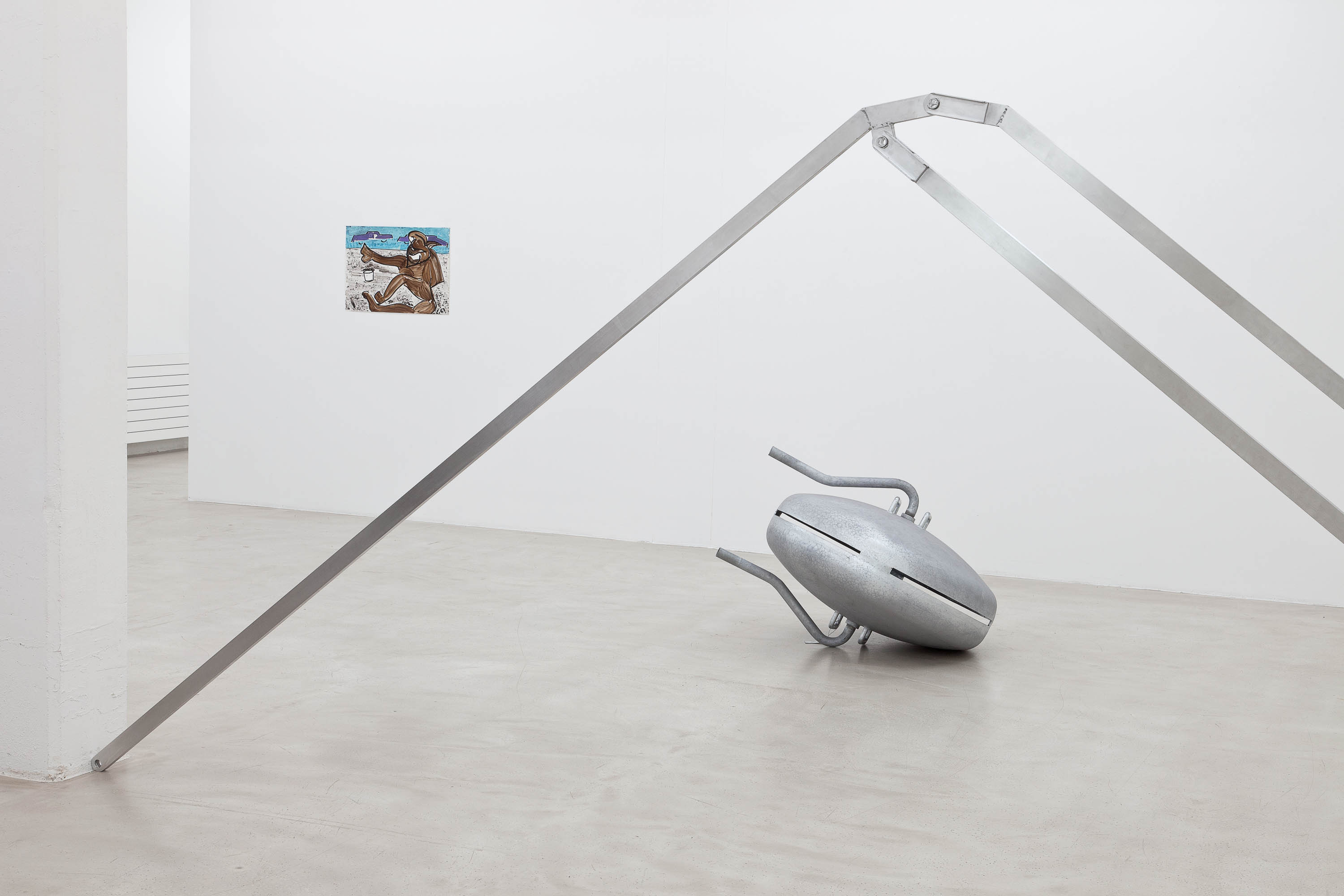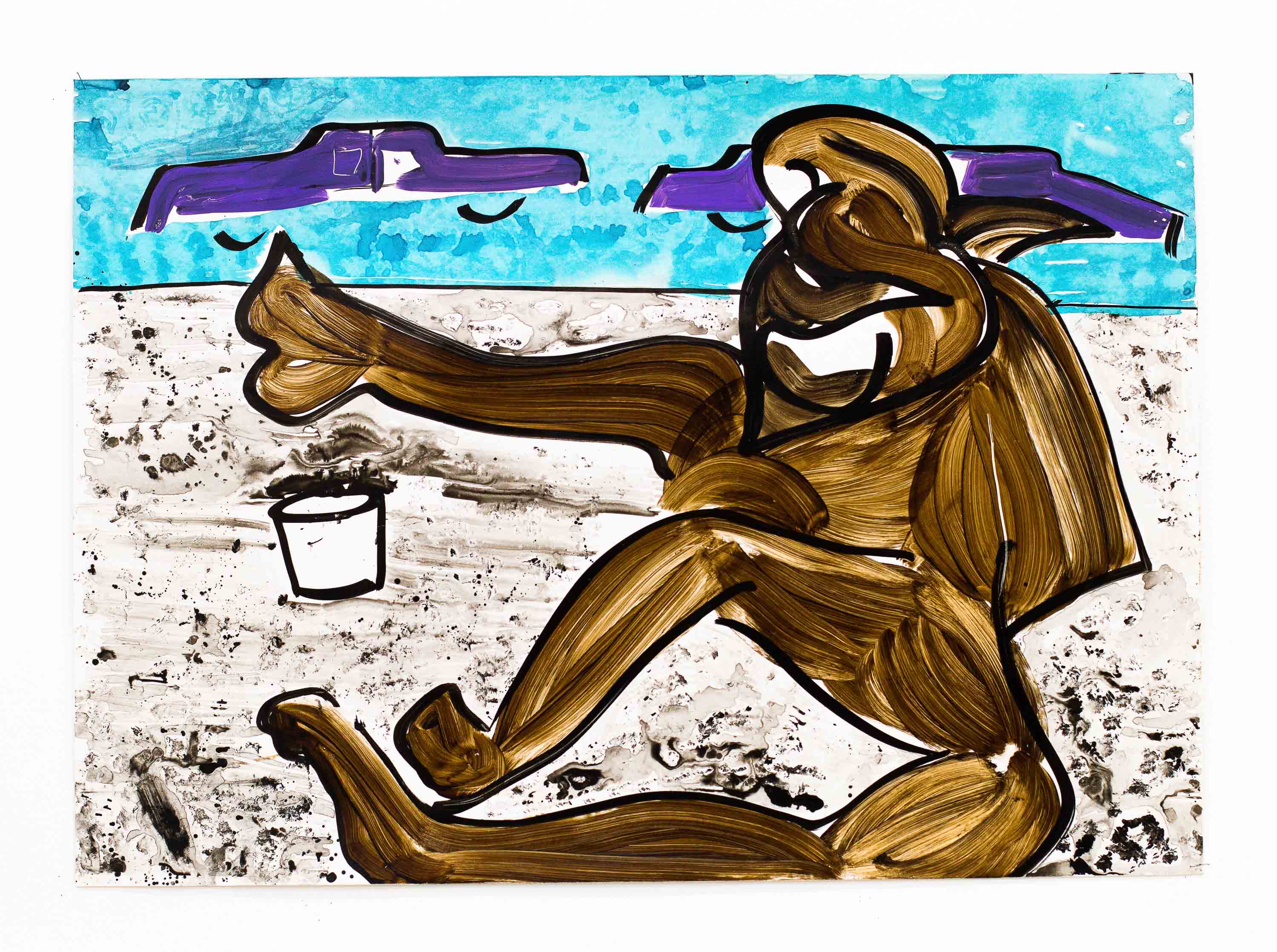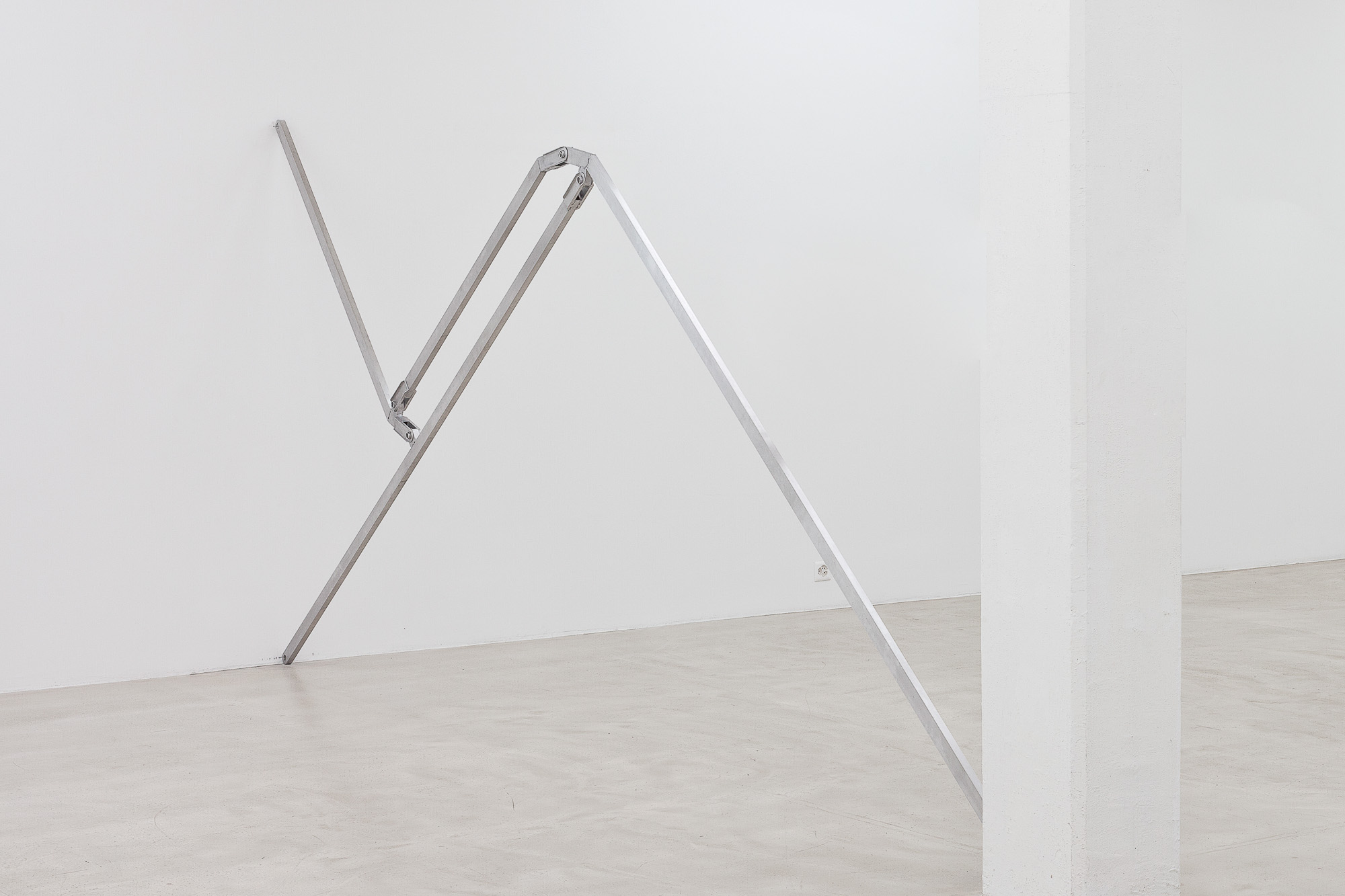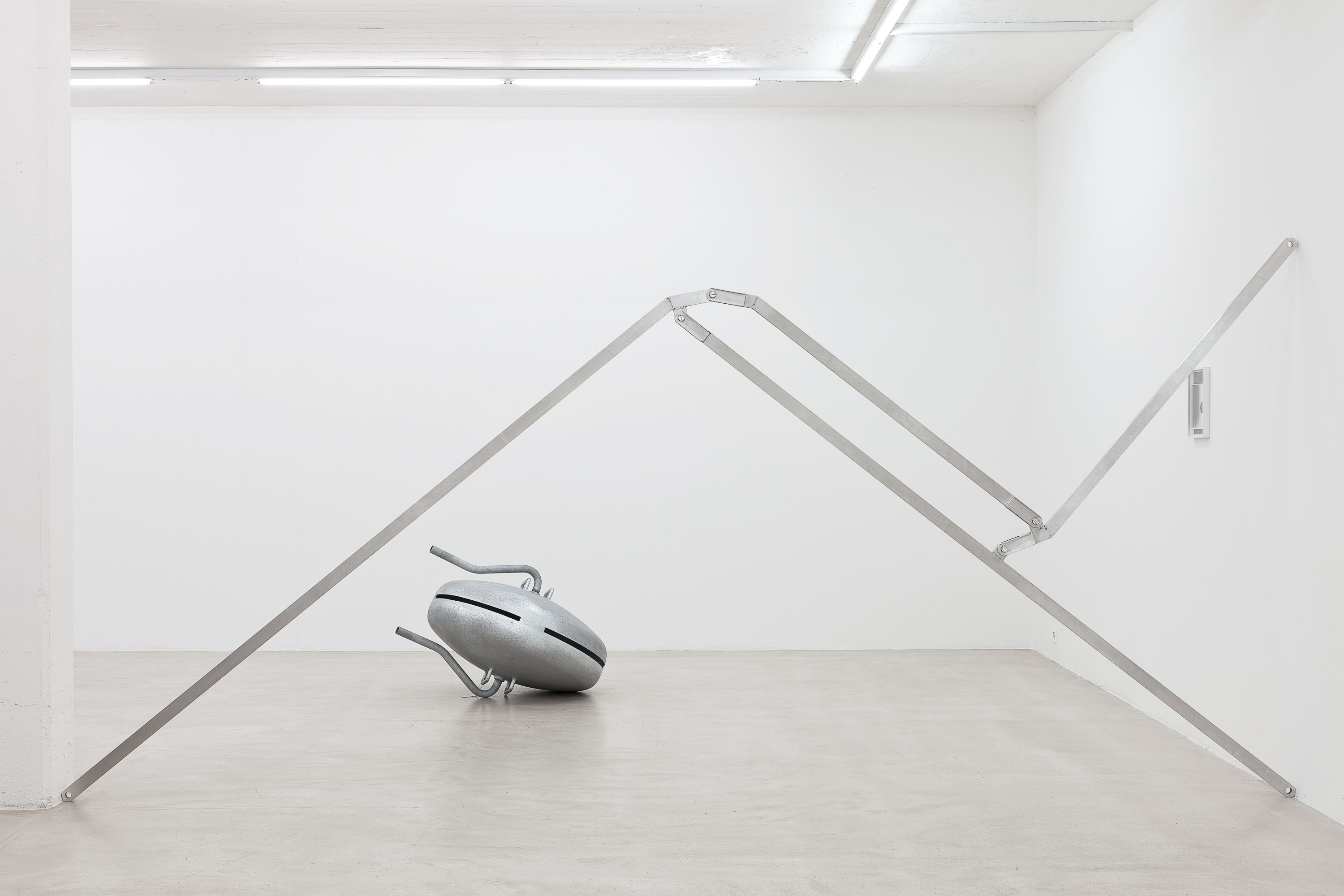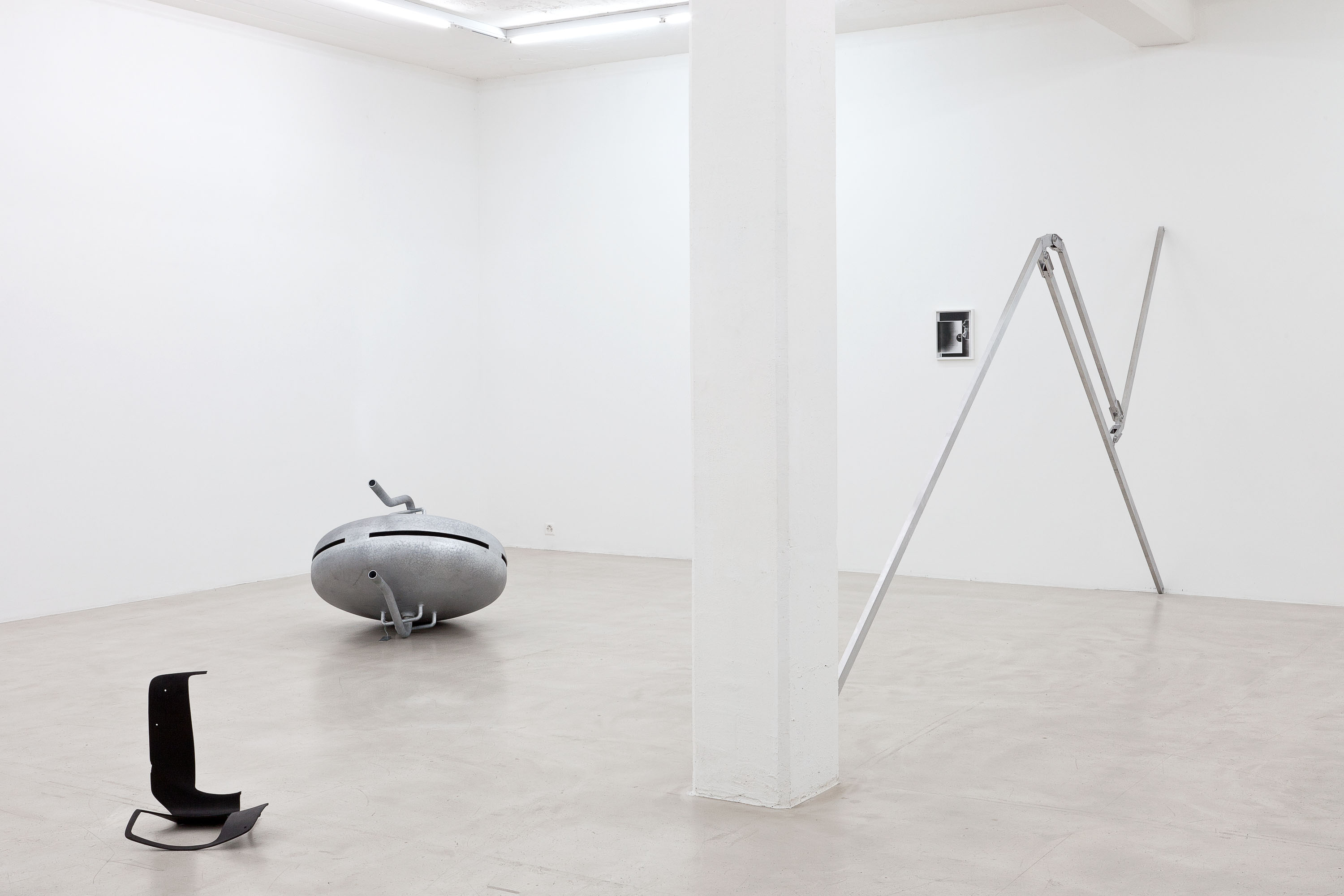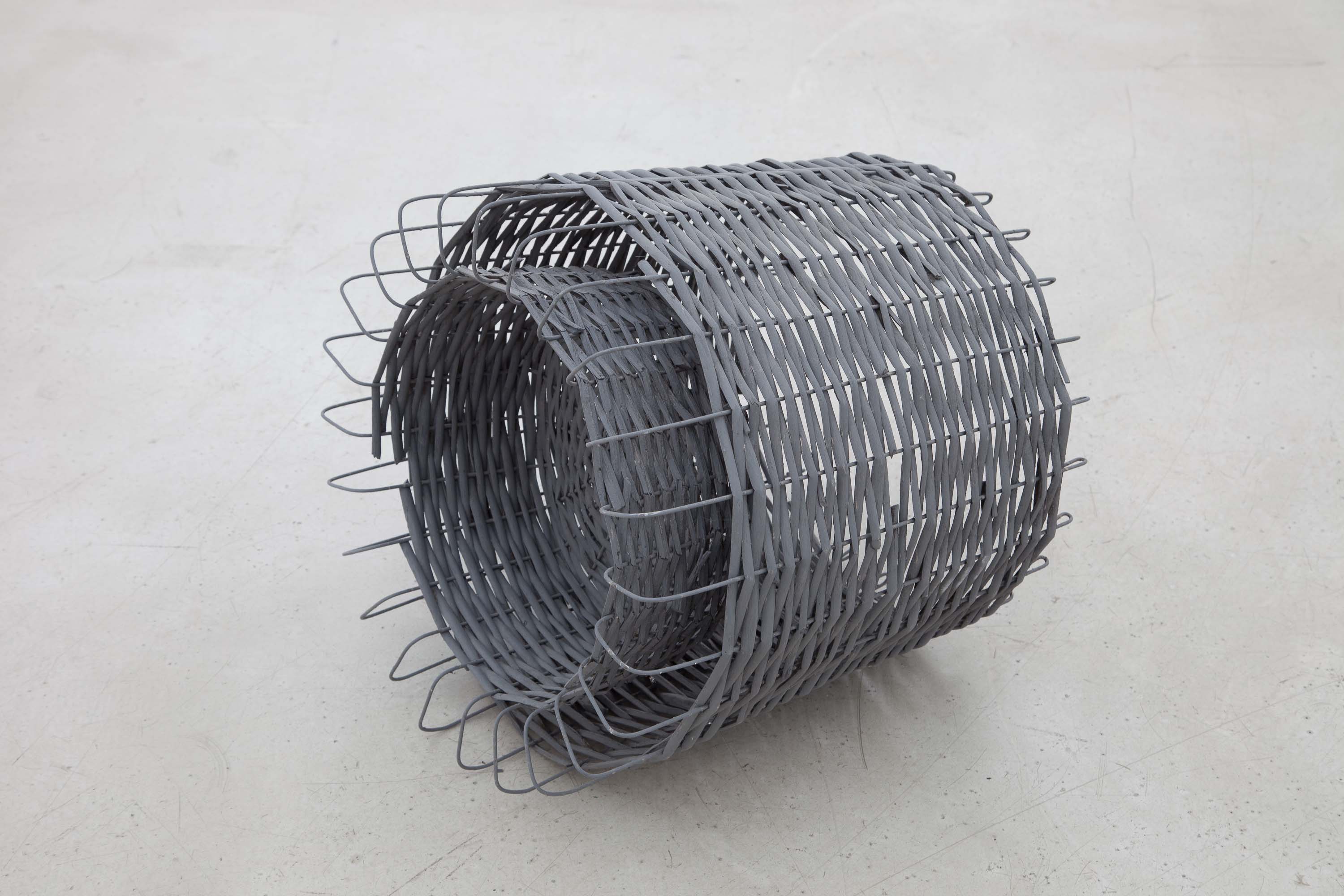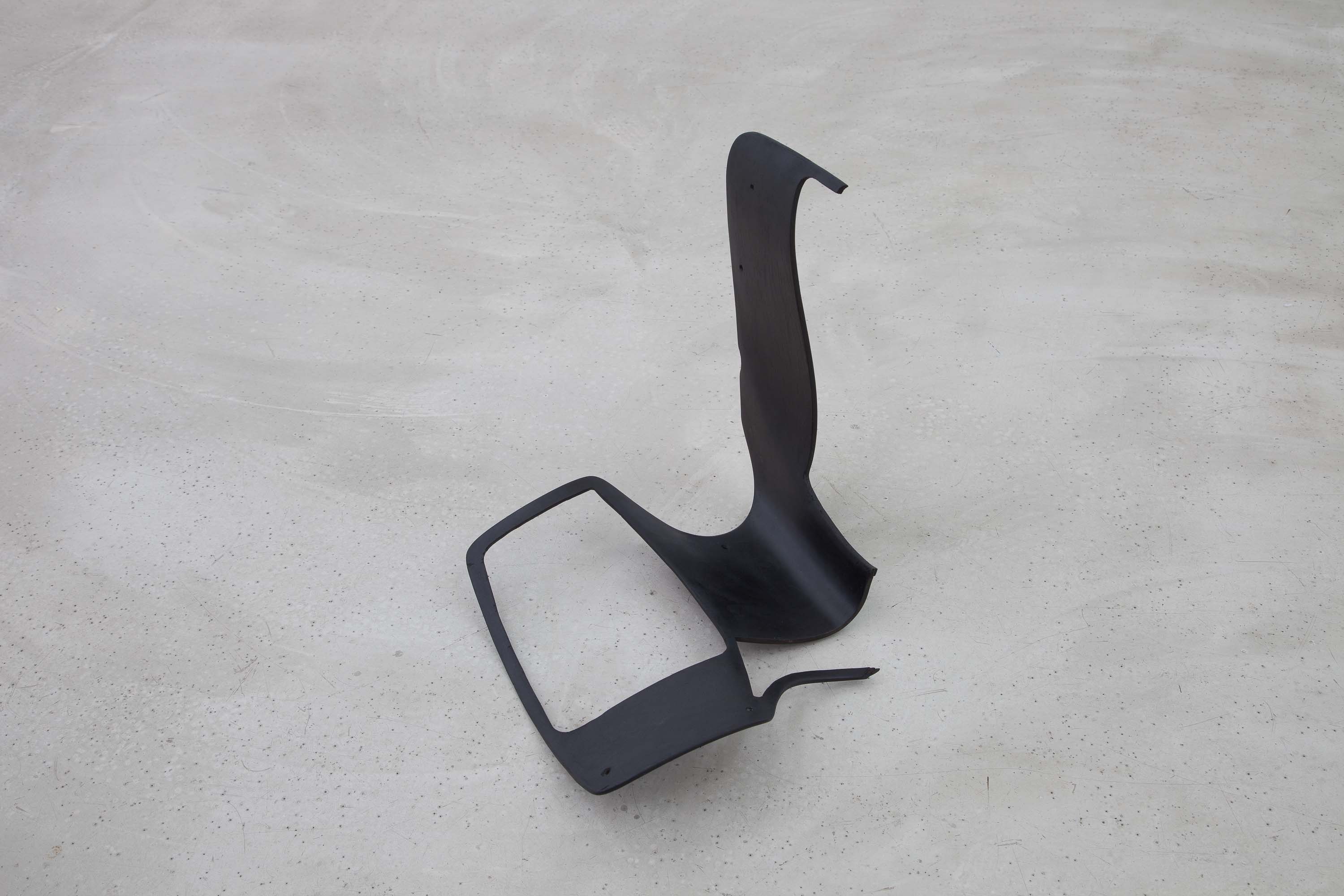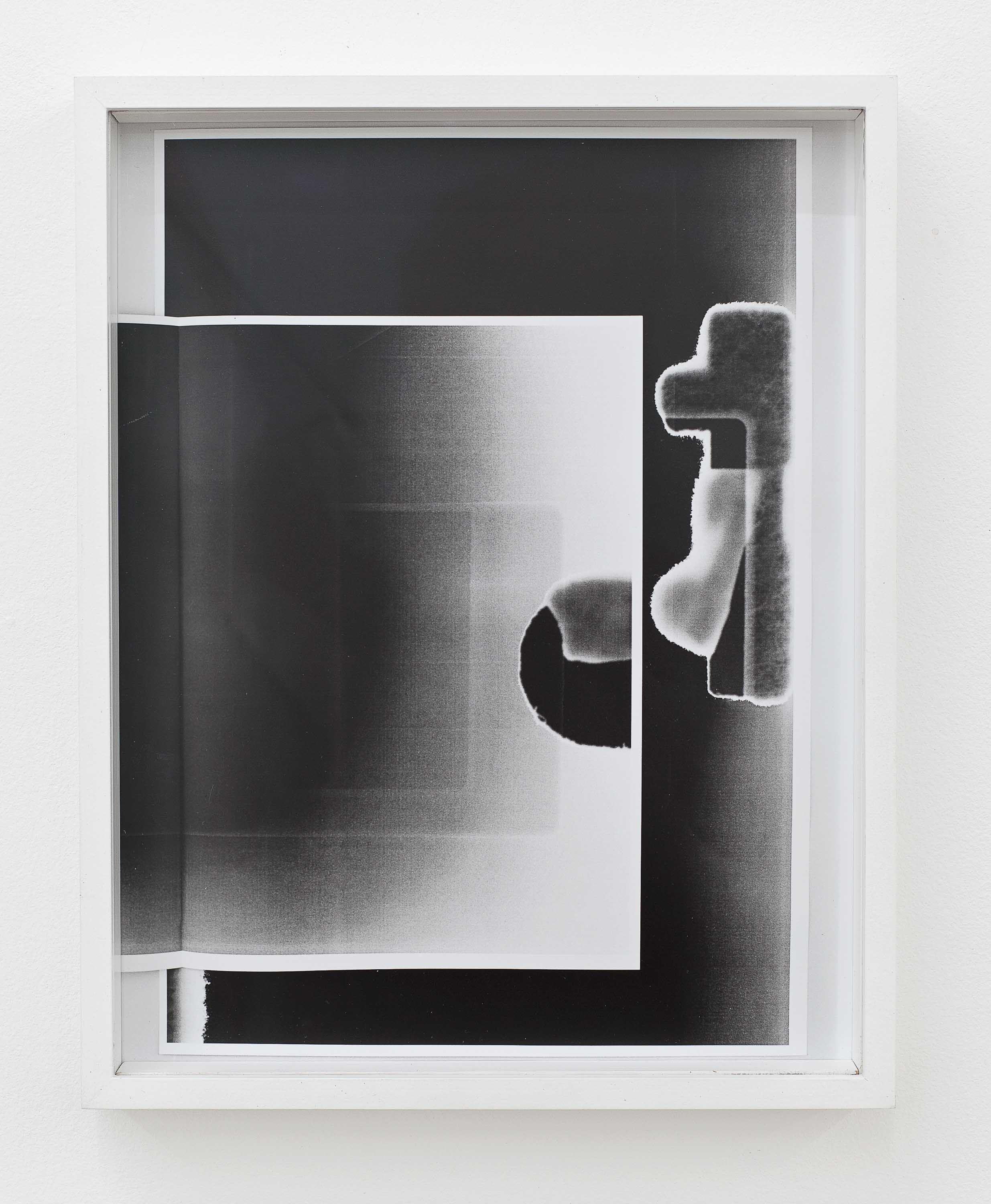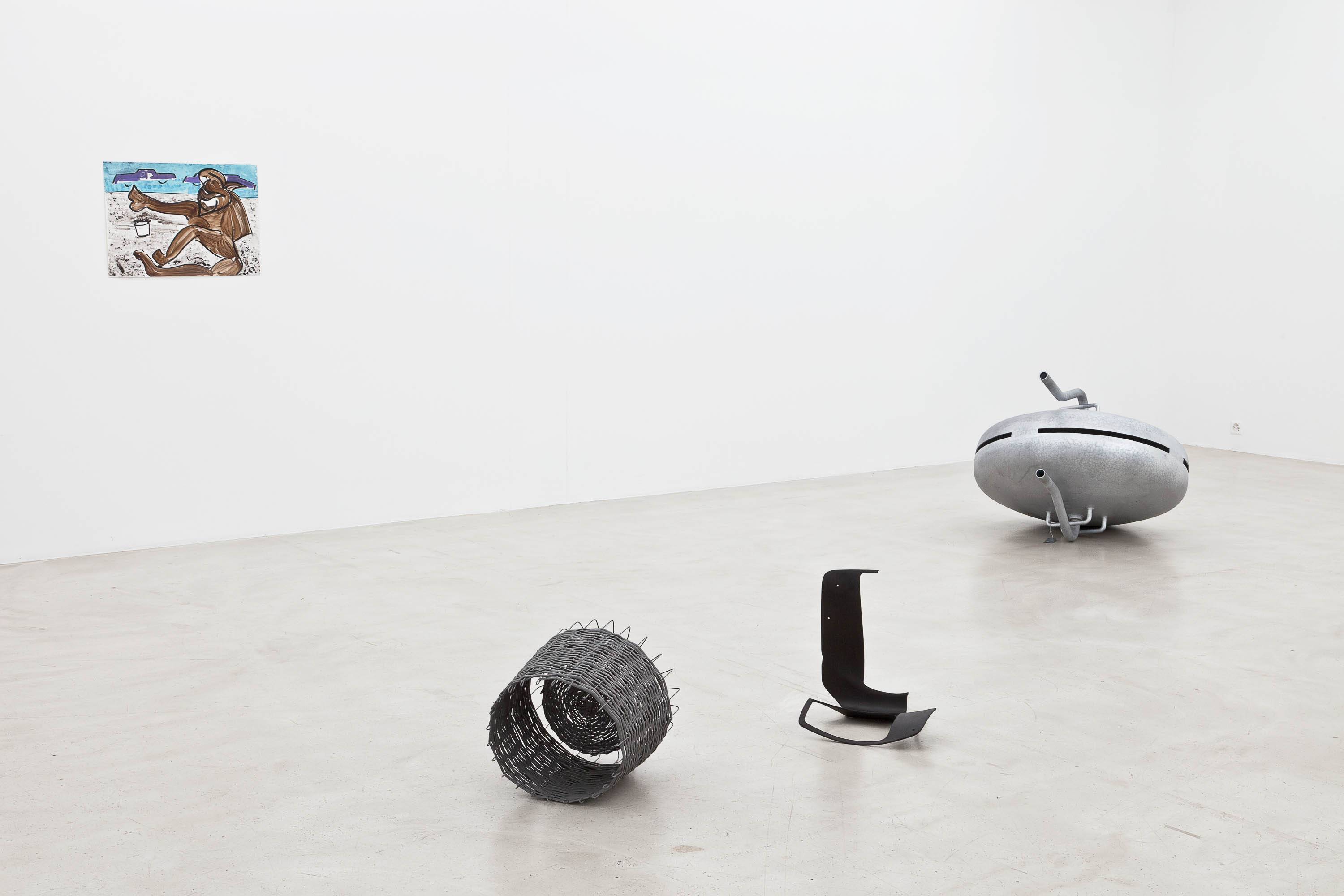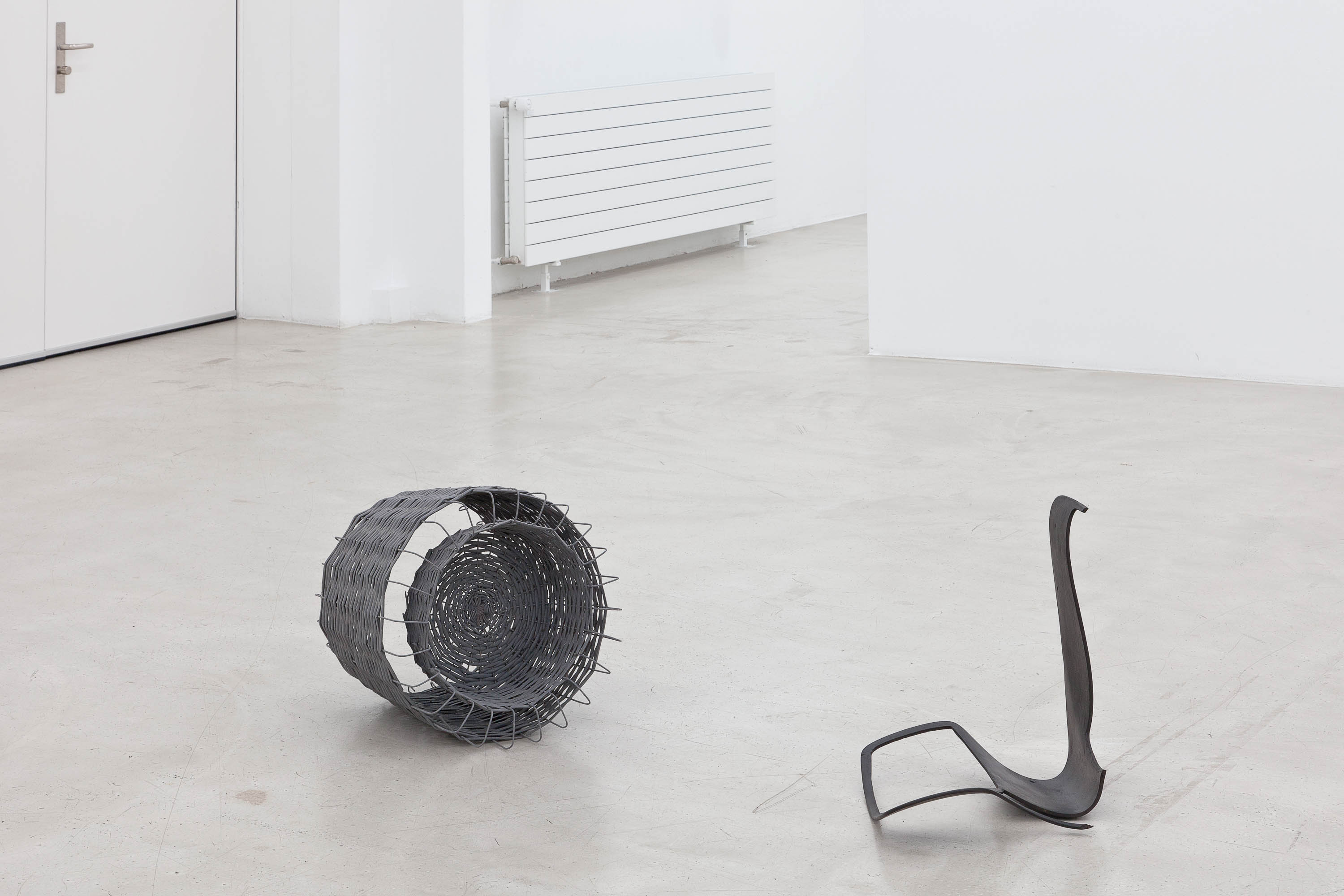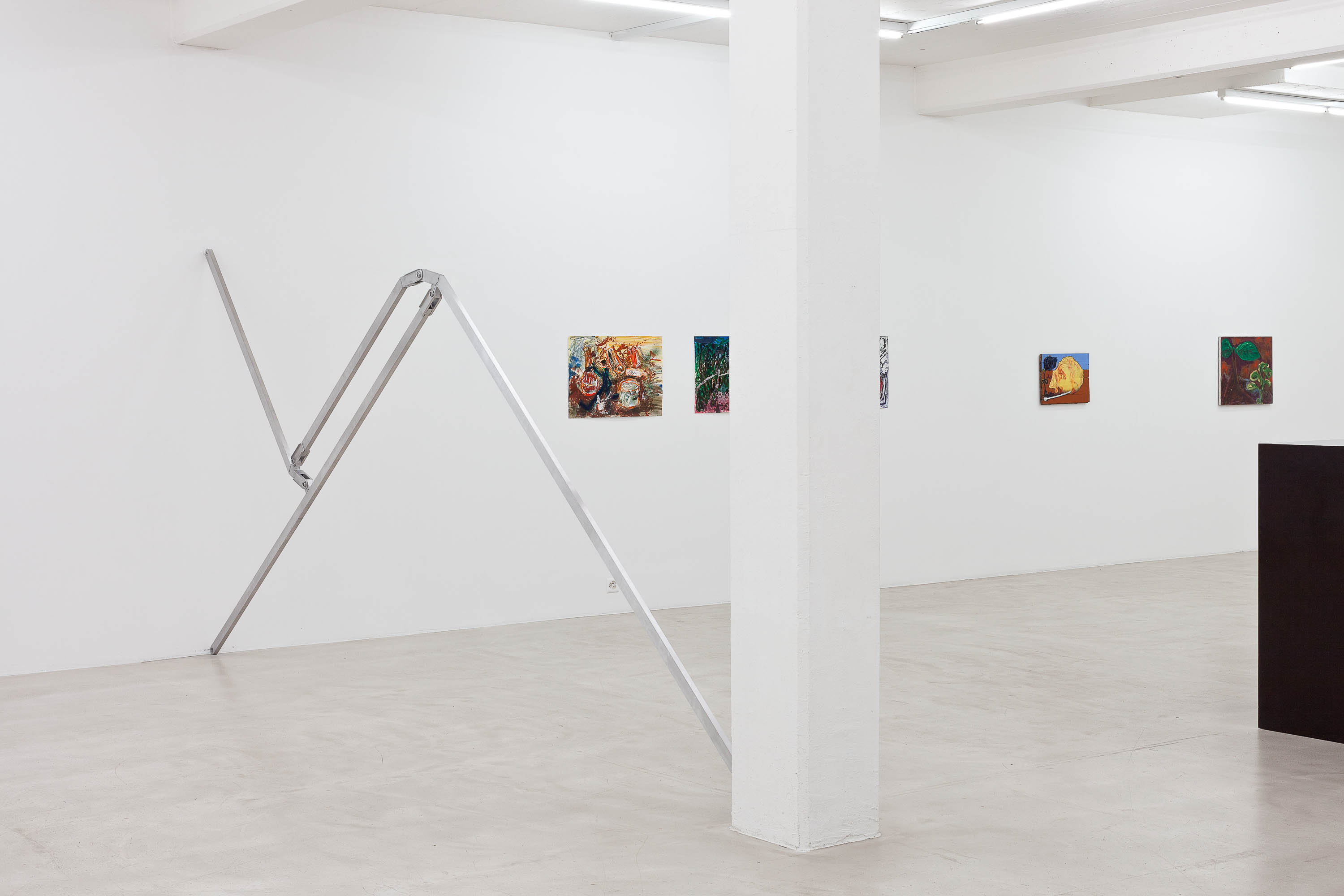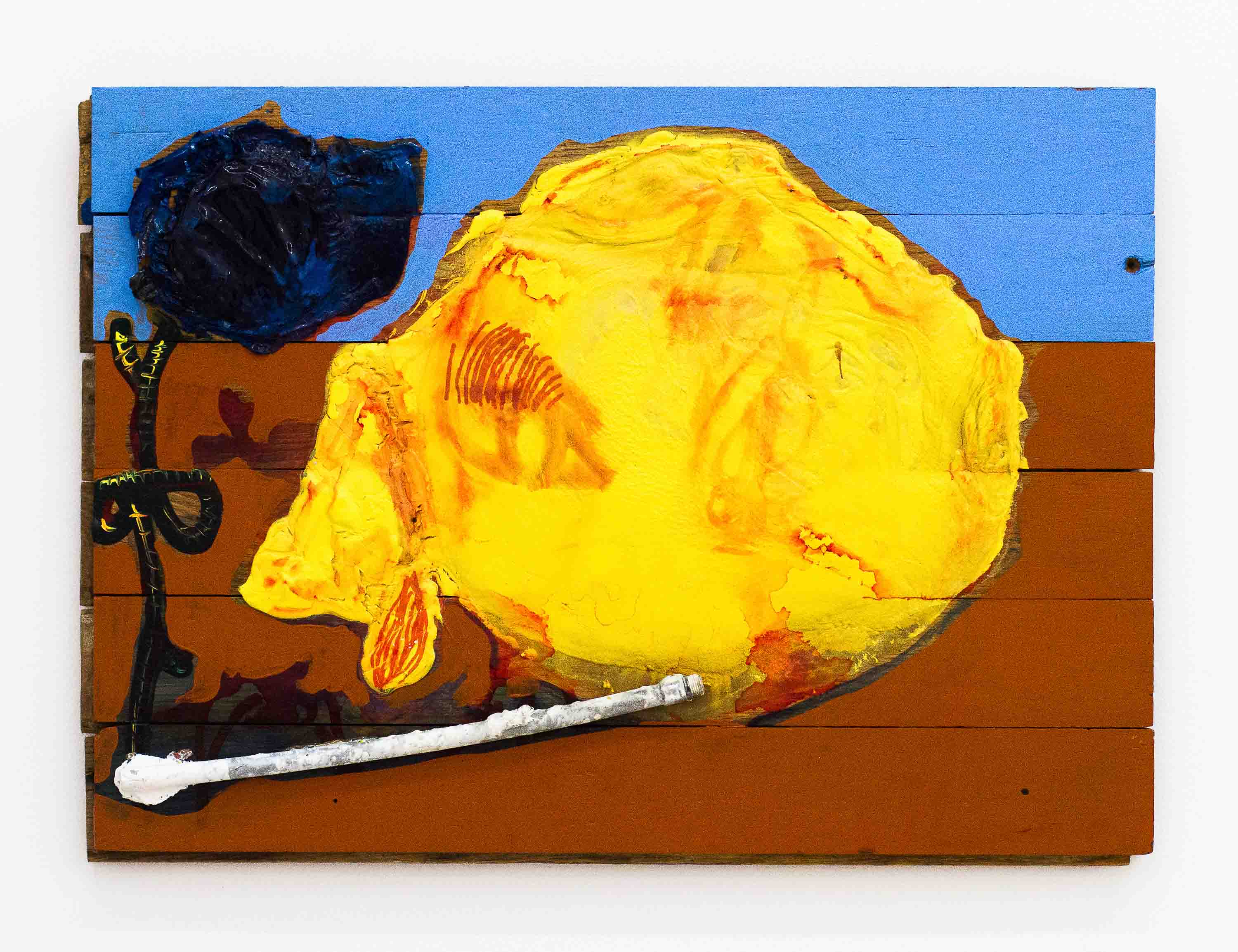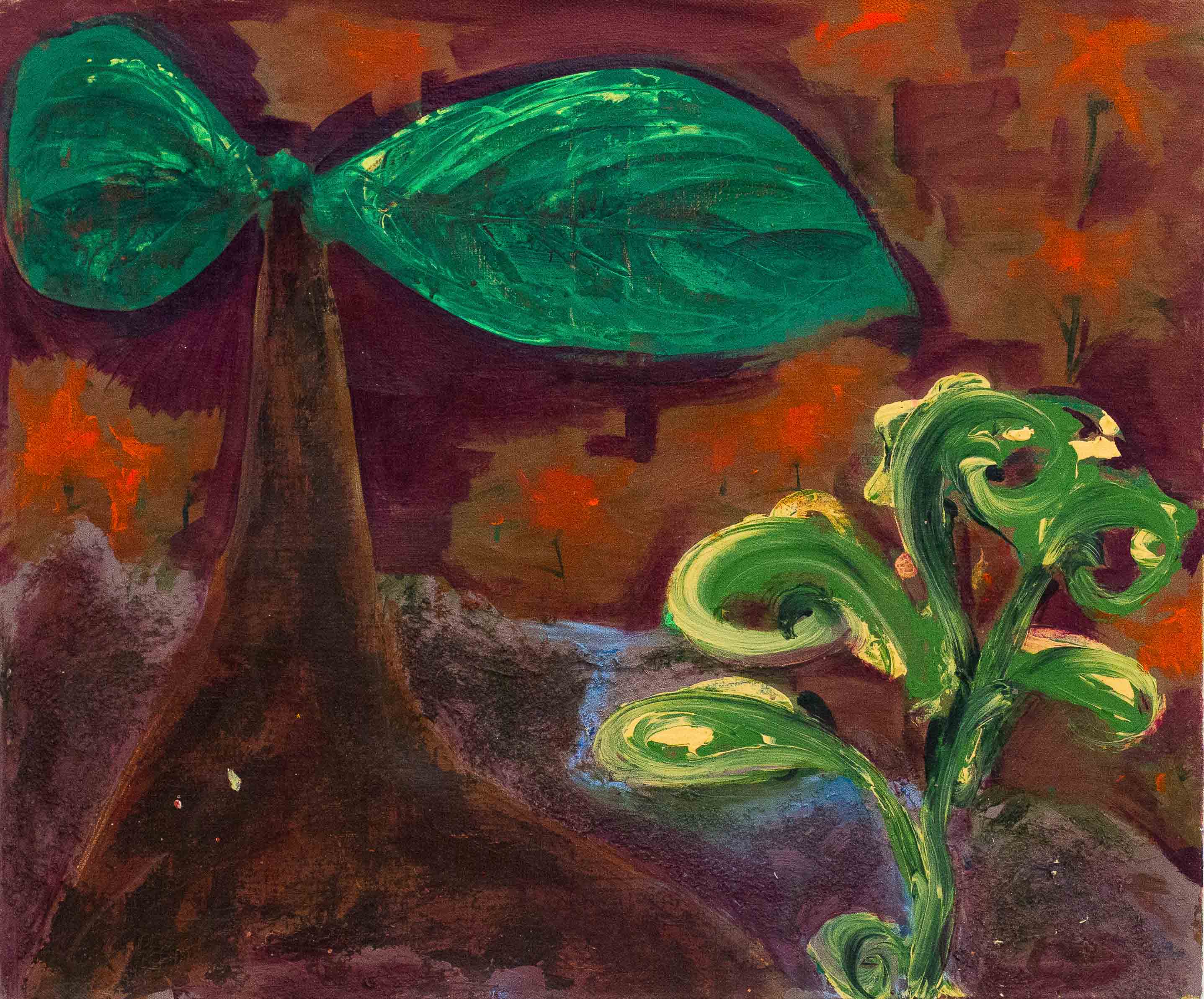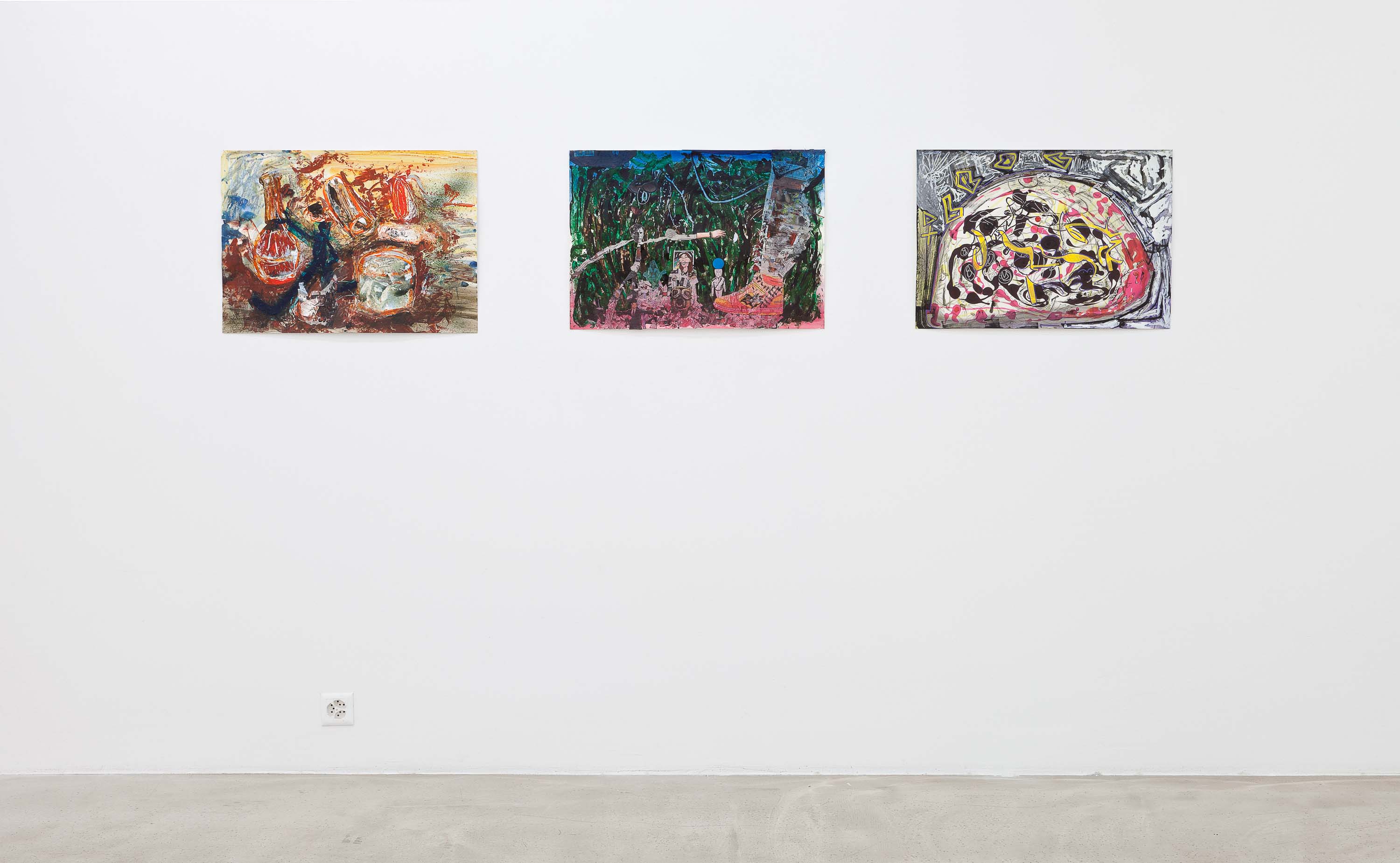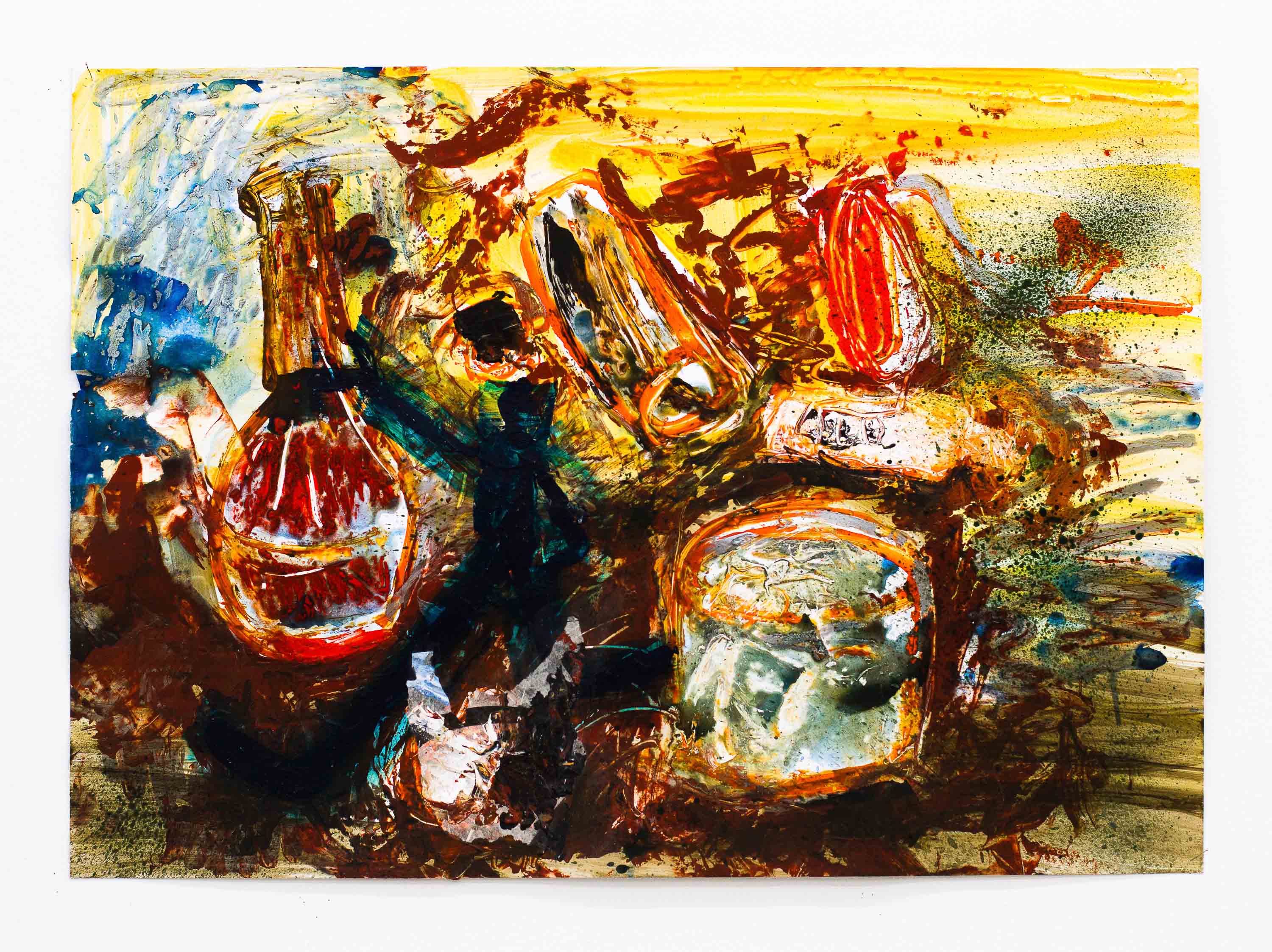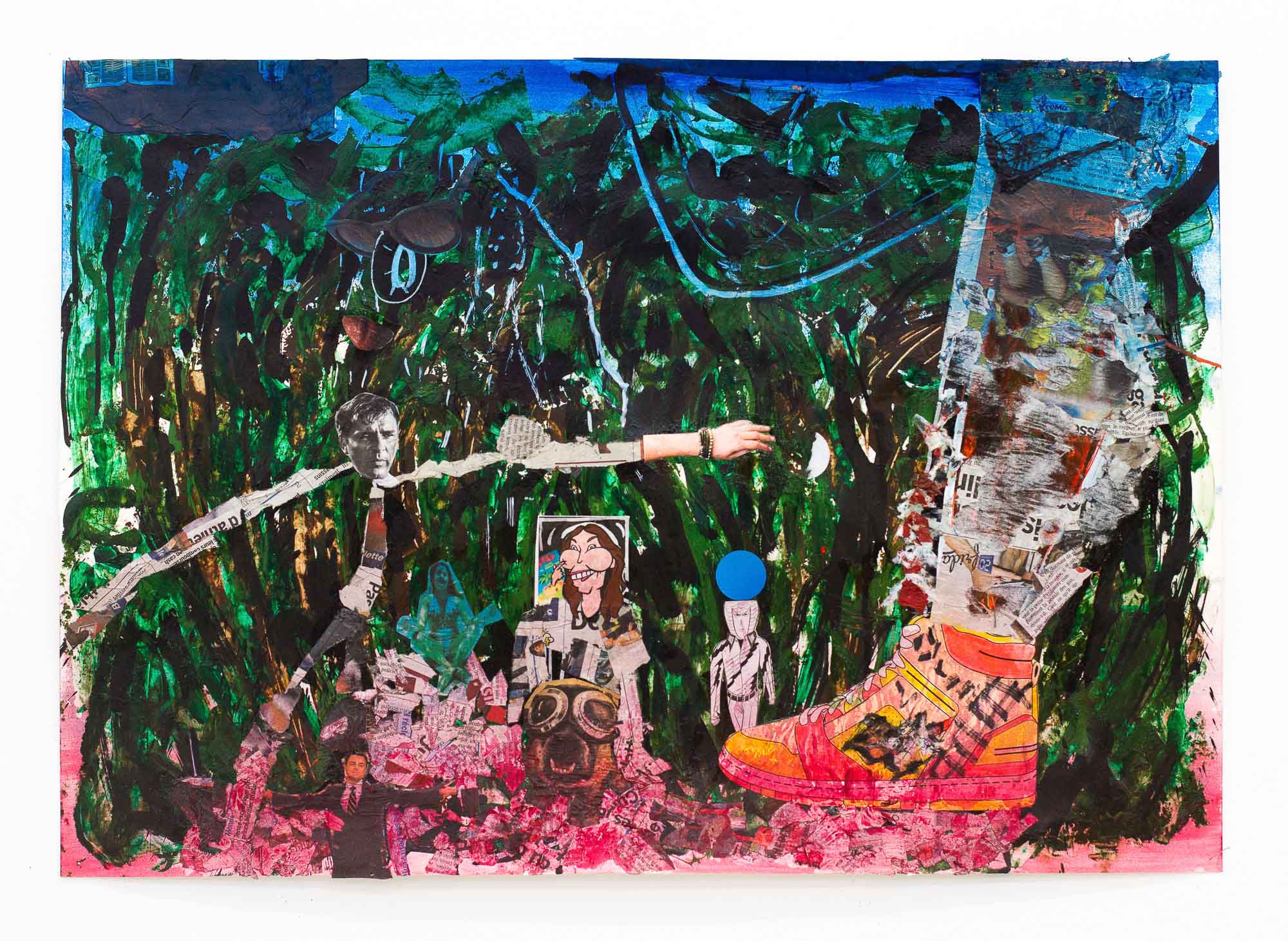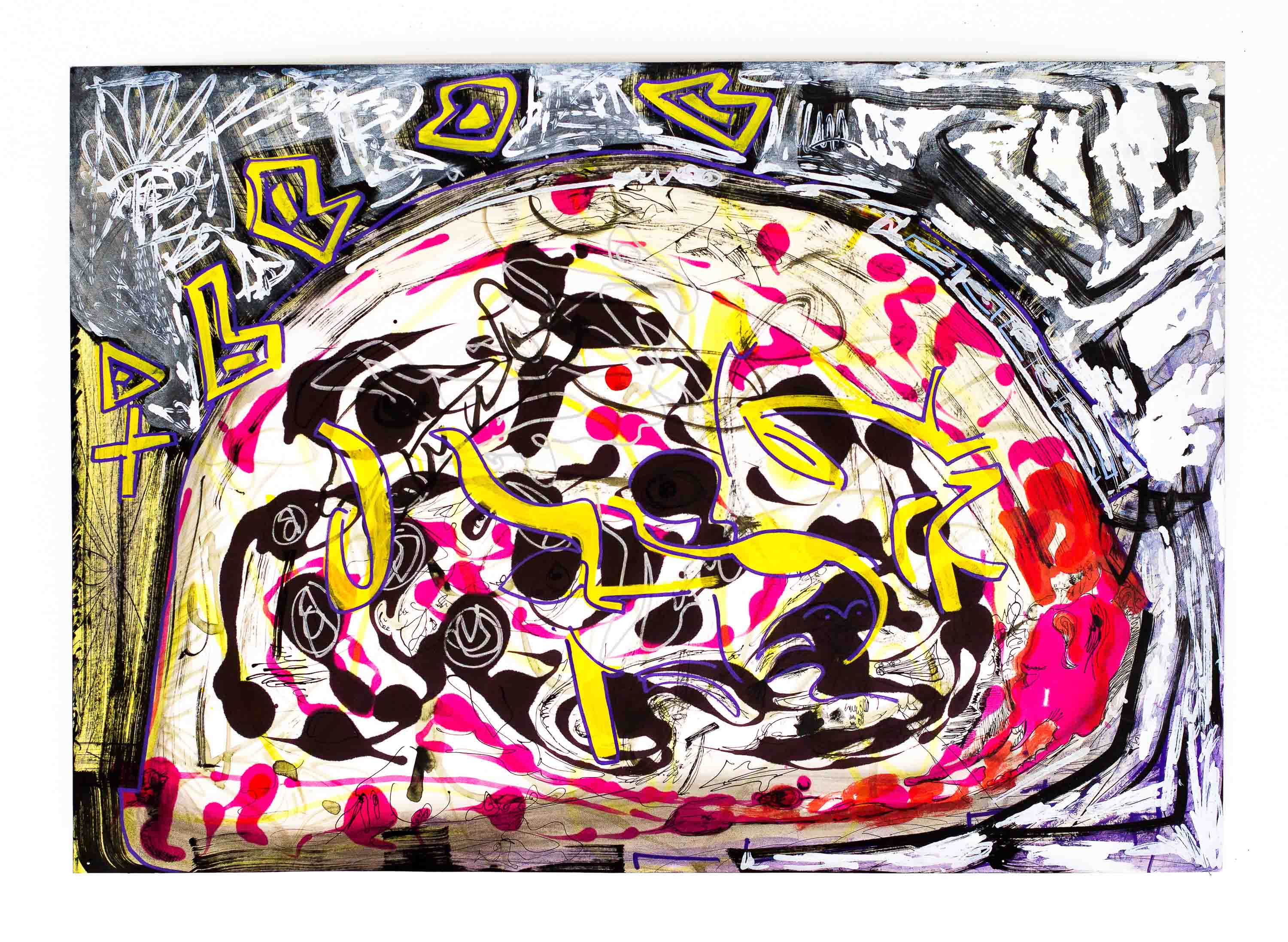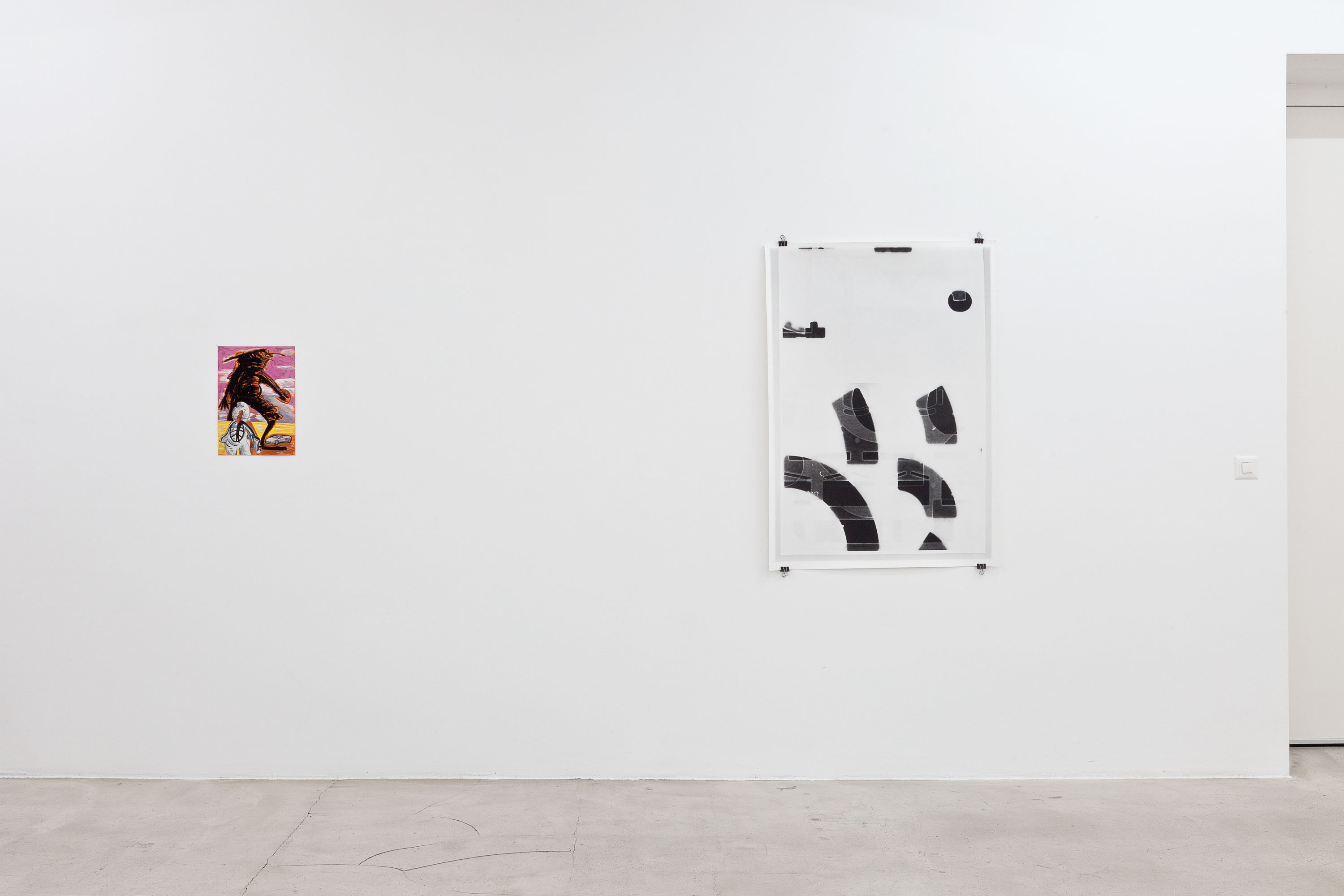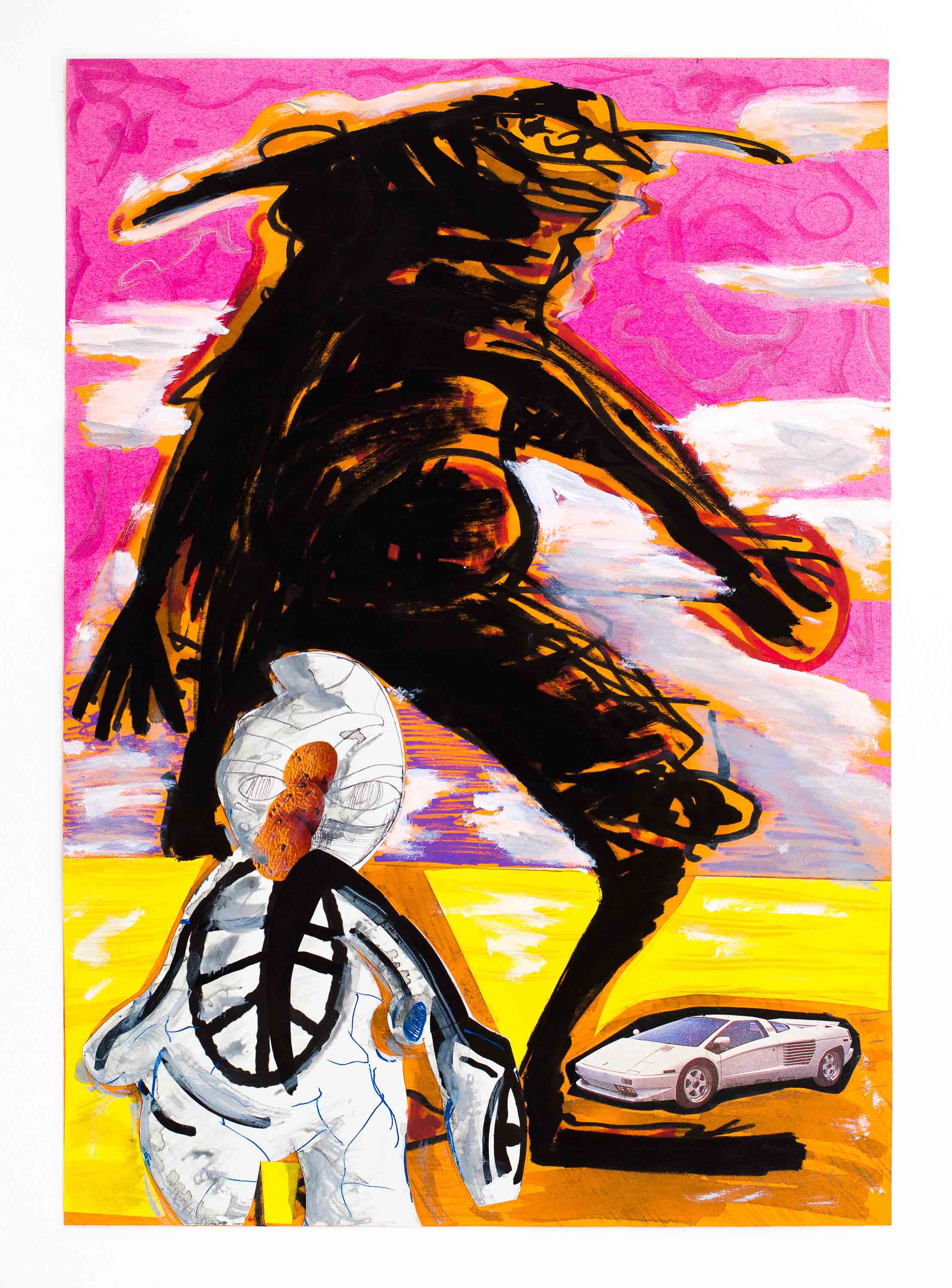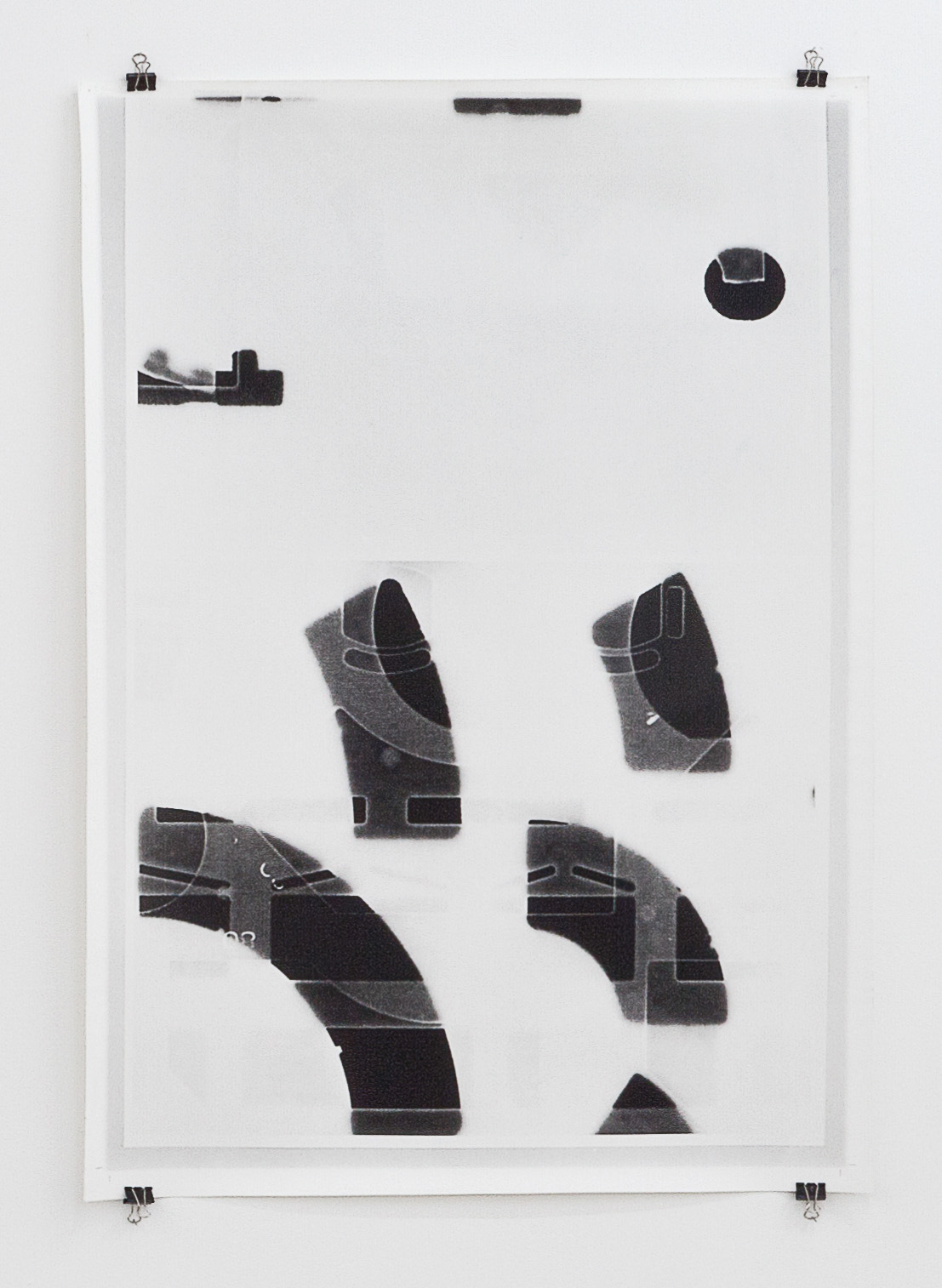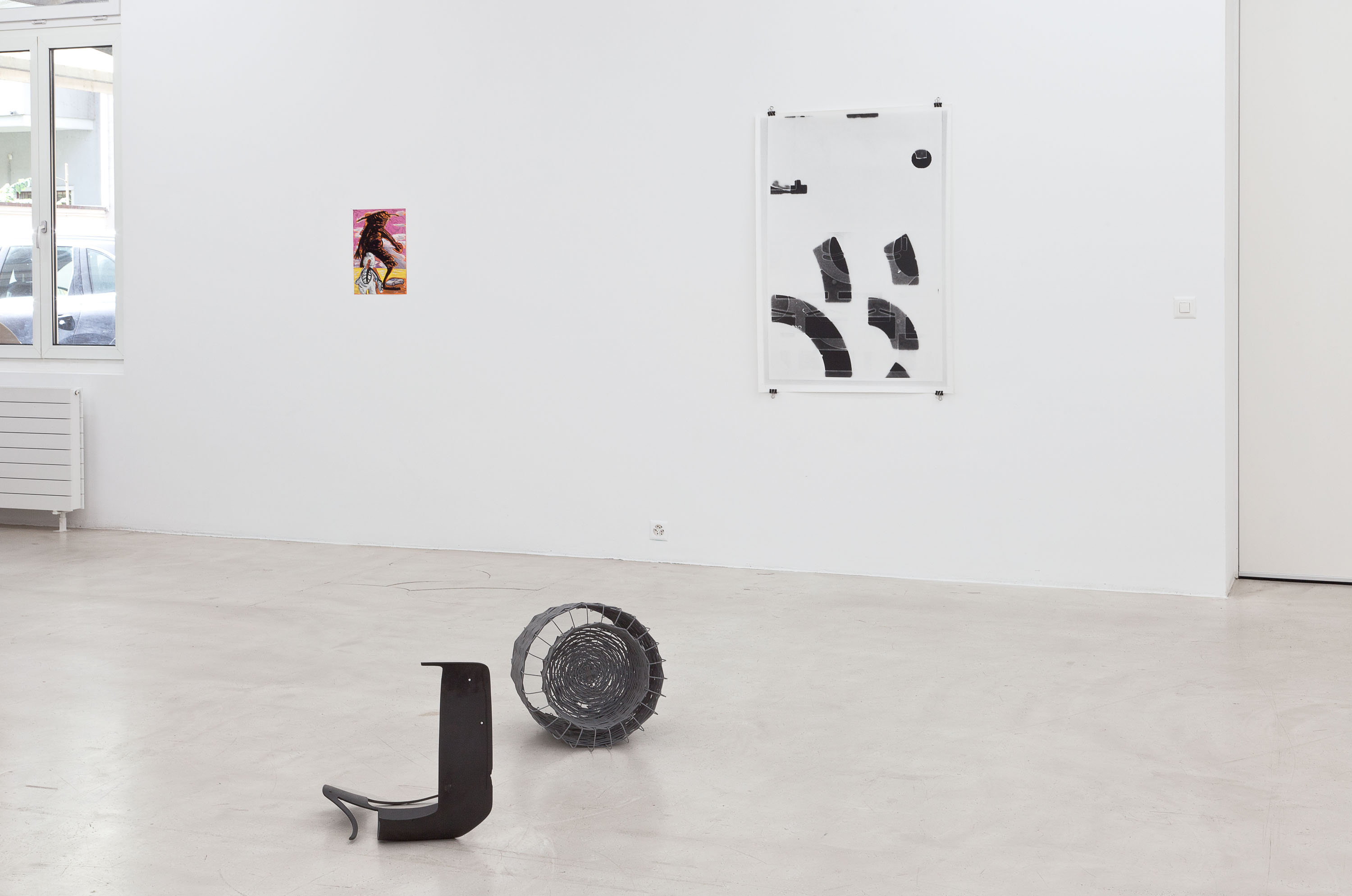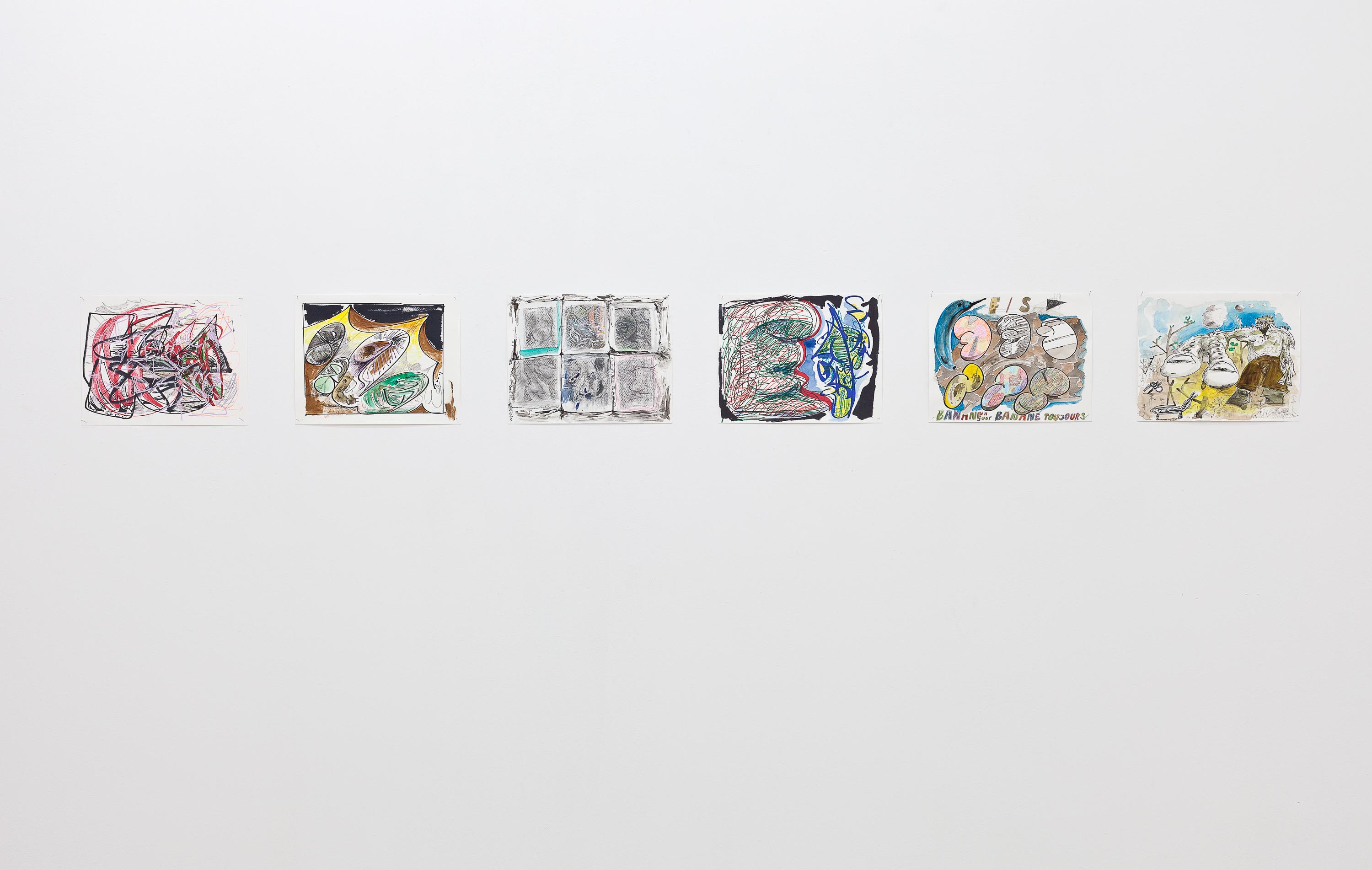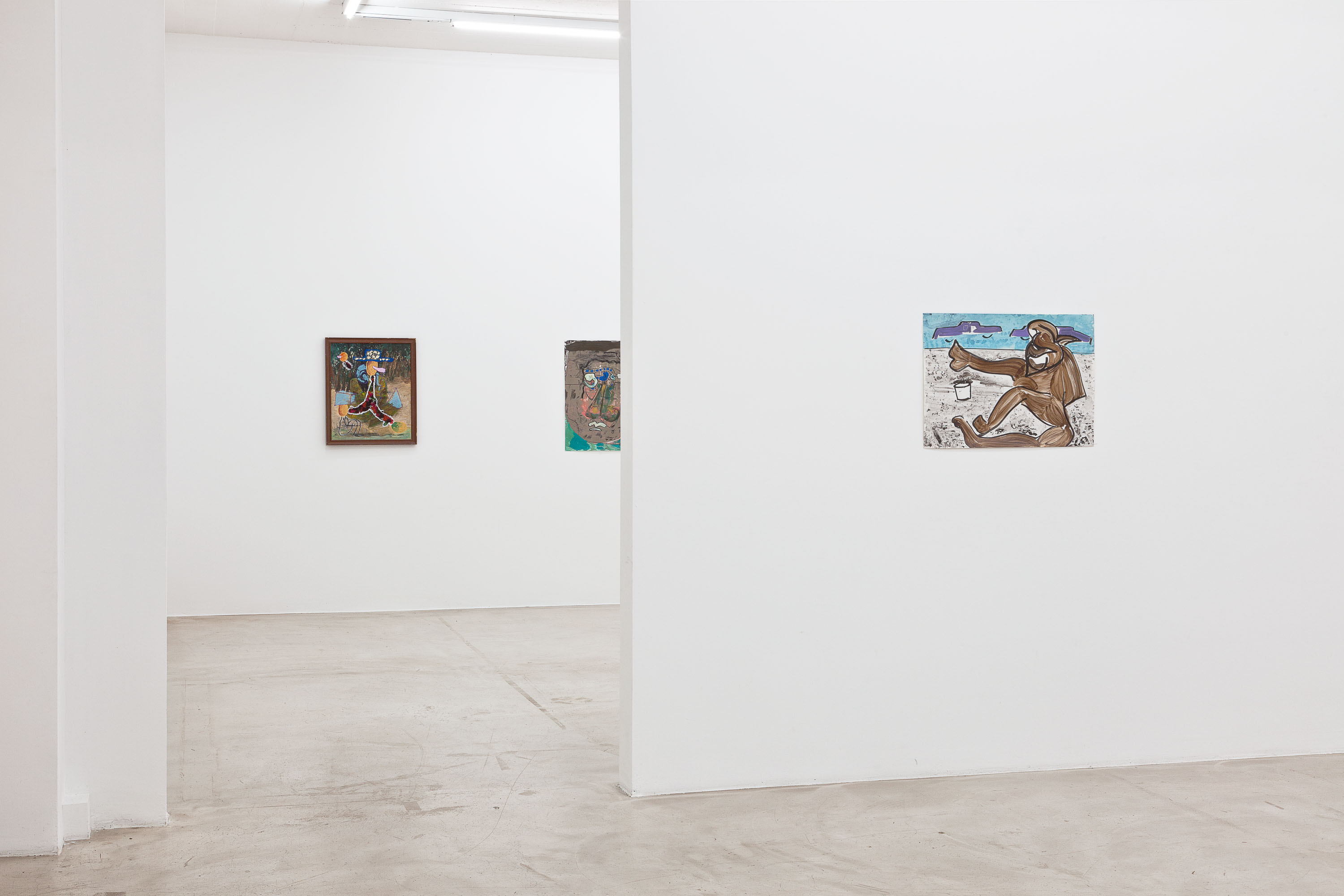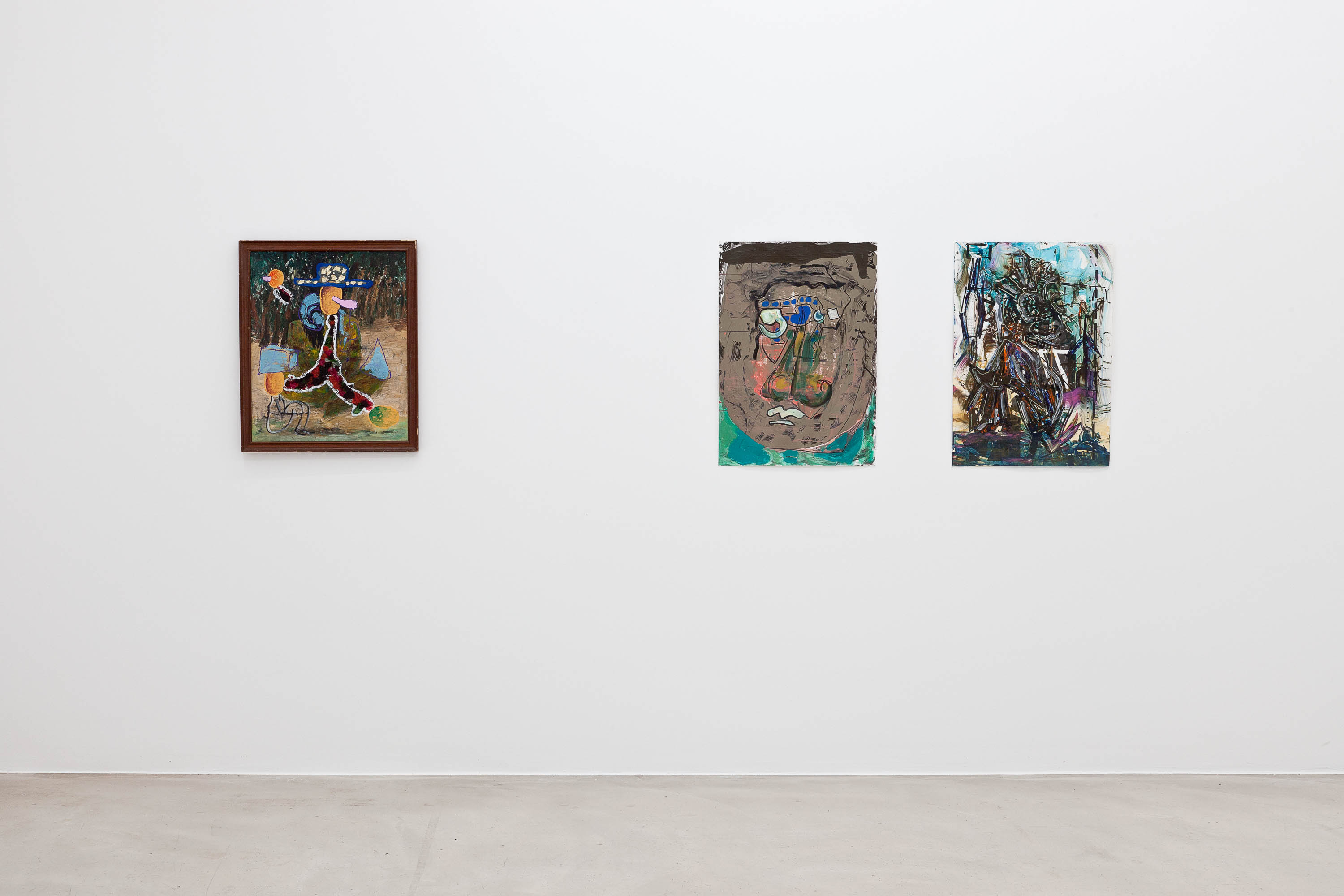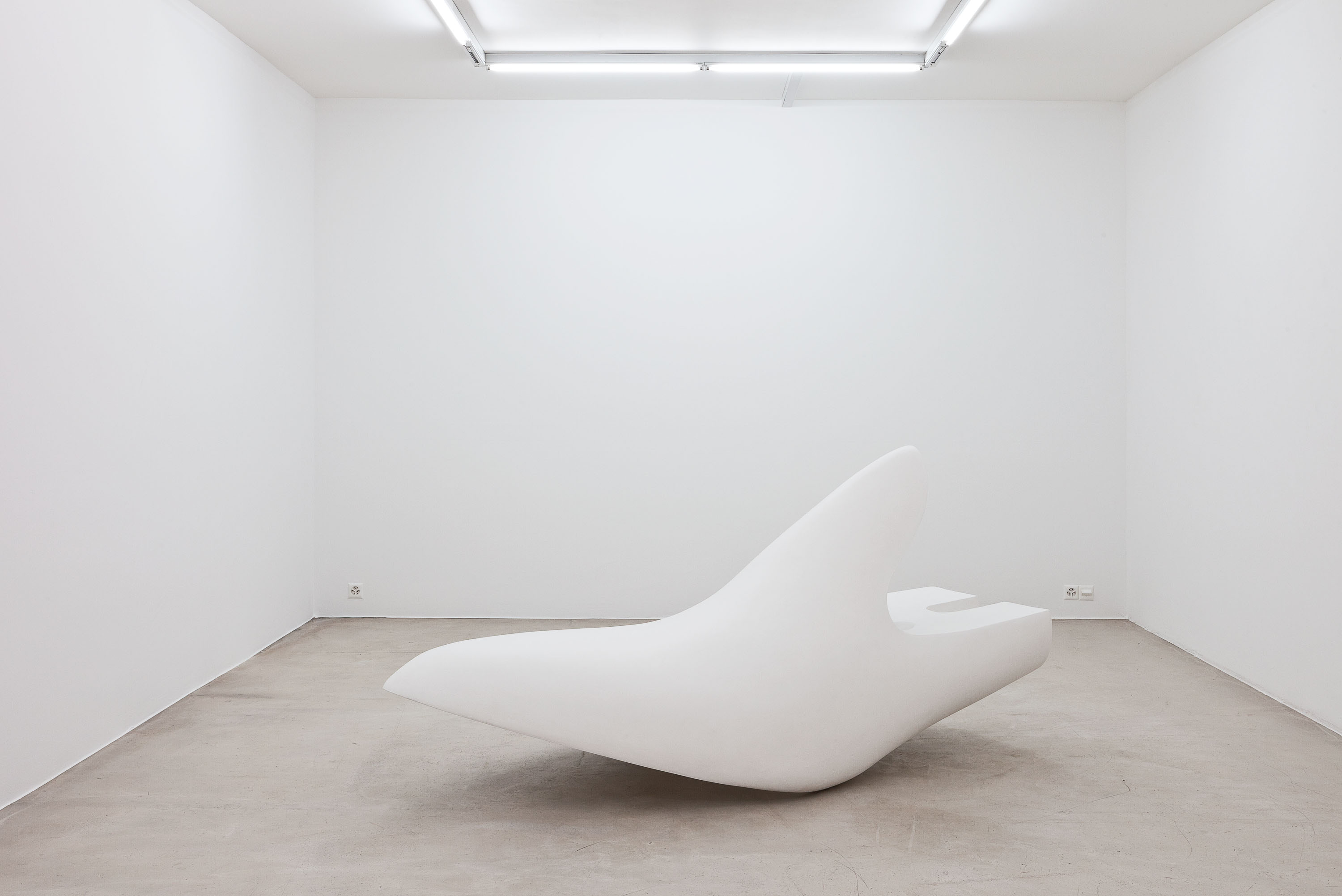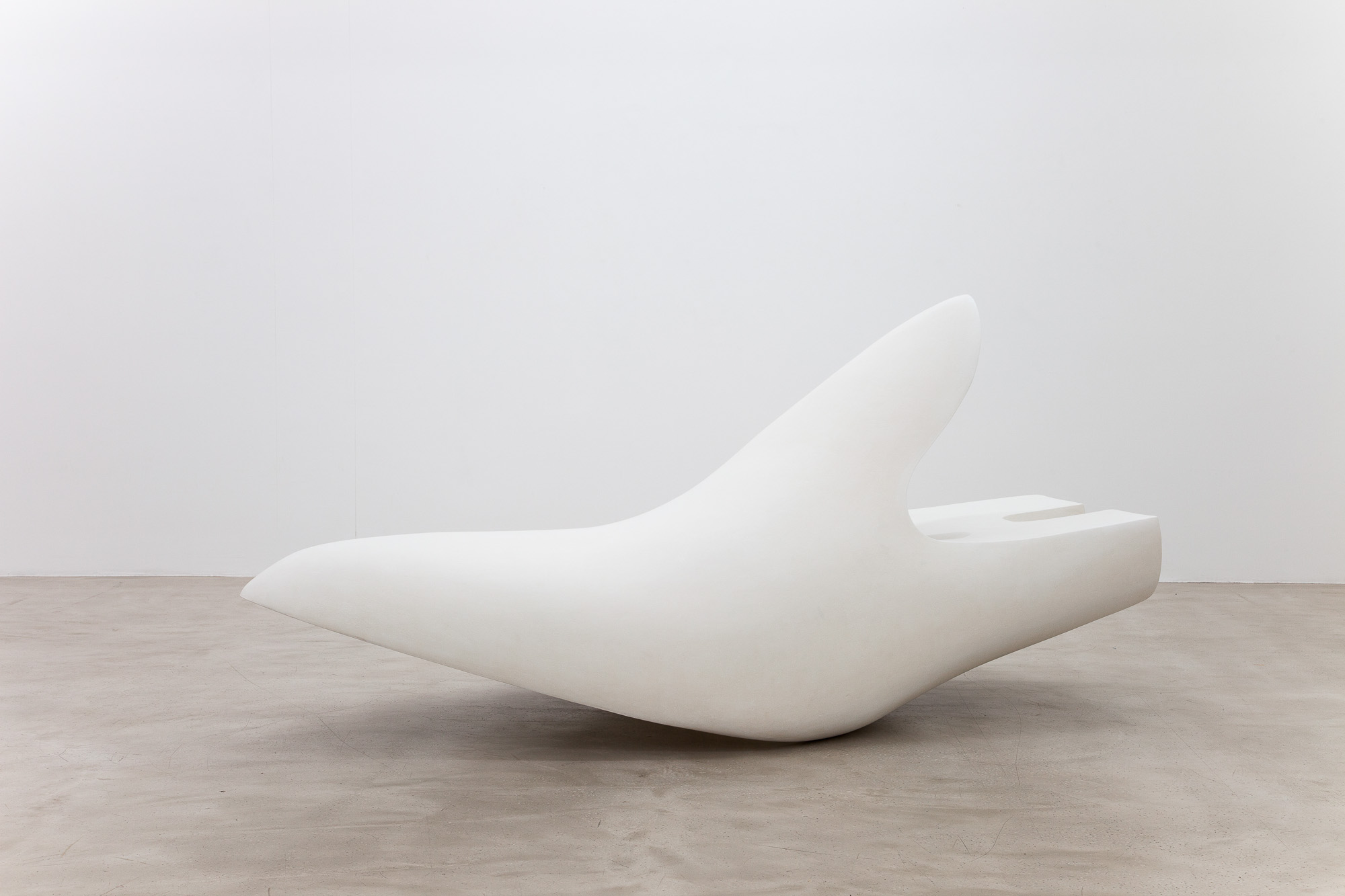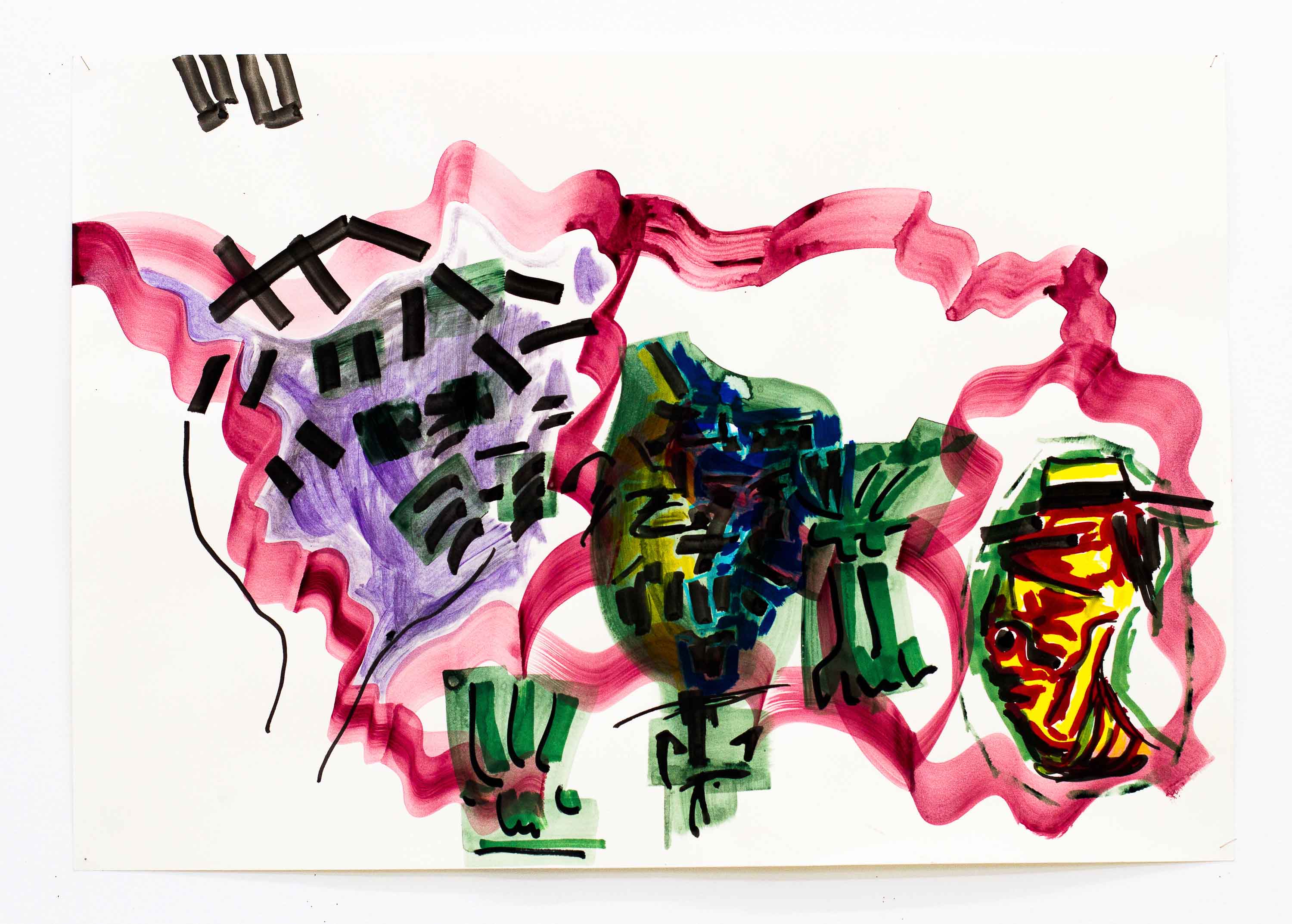- Dates8 September 2018 - 3 November 2018
- Artists
by Ines Goldbach
Ein hängendes Objekt aus Stahl und Glas, das in seinen Umrissen an eine Überwachungskamera denken lässt; geometrische Formen wie Linien oder Flächen aus rötlichem Schamott; minimale skulpturale Gebilde aus Metall oder Holzplatten, die Architekturmodelle sein könnten – wären da nicht ihre Masse, die sich diesem Eindruck verweigern. Schwarz-Weiss-Fotografien von Baukörpern, die reale Situationen im urbanen Raum zeigen, zugleich aber merkwürdig unwirklich anmuten.
Es gehört zu den grossen Qualitäten des in Basel tätigen Künstlers Max Leiß (* 1982), die skulpturalen Eigenarten von Gegenständen, Formen, Architekturen und Situationen des Alltags zu sehen und mit präzisen Eingriffen und Setzungen zu verstärken. Er realisiert Objekte, die eine Funktionalität, auch eine gewisse Alltäglichkeit und damit Selbstverständlichkeit vermitteln – sich aber im nächsten Augenblick diesem Eindruck durch ihre Rätselhaftigkeit und Faszination grundlegend entziehen. Nicht allein die Neuproduktion, sondern das Aneignen, das präzise Umgehen mit dem Vorhandenen ist seinem Arbeitsprozess wesentlich. Oft stammen die Gegenstände aus dem städtischen Gefüge und werden auf ihre skulpturalen Möglichkeiten befragt. Fast scheint es so, als würde das Objekt von seiner gängigen Funktionalität und zugleich Eindeutigkeit für einmal befreit. Aber es sind eben nicht nur die Gegenstände, die losgelöst vom Alltäglichen erscheinen – man selbst, durch die skulpturalen und visuellen Angebote animiert, scheint ein wenig freier im Sehen und Verstehen der eigenen Umgebung.
Das künstlerische Interesse des Bildhauers Leiß geht jedoch über den Umgang mit Fundstücken weit hinaus, es gilt der Formfindung und Transformation, der Schaffung und zugleich Hinterfragung von Volumen, architektonischen und skulpturalen Qualitäten von Gebautem, Gegossenem, Abgetragenem und eben auch Fotografiertem. Dass Max Leiß auch den jeweiligen Ausstellungsraum auf seine spezifischen Eigenarten hinterfragt, ist daher folgerichtig. Für seine Ausstellung im Kunsthaus Baselland hat der Künstler vor Ort eine Linie aus Schamott gegossen, die die architektonische Struktur der drei hintereinandergeschalteten Räume mit einer knapp 40 Meter langen Diagonale überschreibt, gliedert und zugleich als Ganzes lesbar macht.
Im Gespräch mit Max Leiß fällt ein Satz, der sein künstlerisches Vorgehen sehr präzise zu umschreiben vermag: Das Schauen sei für ihn fast das Gleiche wie das Machen. Damit trifft er einen wichtigen Punkt. Das Sehen wird als kreativer Akt verstanden. Denn das aufmerksame Beobachten von räumlichen Konstellationen im Aussenraum ebenso wie im Ausstellungsraum ist nicht nur wichtigster Impuls für Leiß’ künstlerische Tätigkeit selbst. Gerade in einer grösseren Auslegeordnung wie einer Ausstellung wird deutlich, wie Leiß seine Arbeiten untereinander kommunizieren lässt und sie die Kapazität haben, sich inhaltlich – mal subtil, mal offensichtlich – miteinander zu verbinden. Auch werden Momente sichtbar, die das künstlerische Vorgehen von Max Leiß prägen: Eine Setzung, eine Formfindung, ein Eingriff kann Auslöser und Anlass für die nächste Arbeit werden und zu ihr überführen. Max Leiß’ Arbeiten sind ein Angebot. Ein Angebot, sich seinen Werken und deren Verbindungen zueinander aufmerksam, neugierig und reflektierend zu nähern und mit einem frischen Blick unser Umfeld und unsere Alltagsrealitäten zu sehen – mit all ihren Besonderheiten, Absurditäten und auch ihrer Poesie. Es kommt eben einer kreativen Leistung gleich, das vielfach, an jeder Ecke, jedem Platz und jedem Zwischenraum gestaltete städtische Umfeld als skulpturale, rätselhafte, teils ungewollt humorvolle Setzungen innerhalb eines urbanen Gefüges sehen und als solches verstehen zu können.
A suspended object in steel and glass, the outline of which could remind you of a surveillance camera; geometric forms like lines or shapes in reddish chamotte clay; minimal sculptural figures from metal or planks that could be architectural models – if it were not for their size preventing that reading. Black and white photographs of building masses that show actual situations in urban spaces, yet still seem strangely unreal.
Among the great qualities of the Basel-based artist Max Leiß (b. 1982) is that he sees the sculptural particularities of objects, forms, architecture and everyday situations and emphasises them with precise interventions and arrangements. He realises objects that communicate their functionality and being of an everyday nature, and thus matter-of-factness, yet upon a further glance those same objects fundamentally retract the first impression through their strangeness and ability to fascinate. Key to his working process is not merely new production, but also the appropriation of that which already exists and how he deals with it. Objects often come from urban material and are examined for their sculptural potential. It almost seems as if the object is freed from its customary functionality and given ambiguity for once and for all. But not only objects seem to be loosened from the everyday – inspired by these sculptural and visual propositions, the viewer themselves may be a little freer to see and understand their own environment.
However, the sculptor Leiß’ artistic interest goes much further than his approach to found objects. It lies equally in finding forms and transformations, in creating and at the same time challenging volumes, the architectural and sculptural qualities of that which is built, cast, excavated and, indeed, photographed. It is consistent, therefore, that Max Leiß does not merely break objects down, transform and alter them in order to distil the sculptural qualities of these found things, but he also scrutinises the specific particularities of a given exhibition space. For his exhibition at the Kunsthaus Baselland the artist has cast a line of chamotte clay in situ, a line that draws a nearly 40-metre-long diagonal over the three connecting gallery spaces, a line that links them and makes them legible as one whole.
In discussion with Max Leiß, a line occurs that could define his artistic approach very precisely: for him, looking is almost the same as making. With this, he makes an important point. Seeing is understood as a creative act. Attentive observation of spatial constellations in outdoor spaces as well as within the exhibition space is not just an important stimulus for Leiß’ artistic activity itself. In the major stocktaking that an exhibition offers it becomes clear how Leiß creates dialogue between his works, works that have the capacity to relate to each other – sometimes subtly, sometimes more obviously. Moments also become visible that mark Max Leiß’ artistic process: an arrangement, the finding of a form or an intervention can become the catalyst and reason for the next work, leading into it. Max Leiß’ works are a proposal. An offer to approach his works and to consider them and their interconnections attentively, reflectively and with curiosity, and to see our own environment and our quotidian realities with fresh eyes – with all their particularities, absurdities and their poetry too. It is indeed a creative performance to be able to see and understand the multiplicity on every corner, in every square and every in-between space of the designed civic space as sculptural, cryptic, sometimes unintentional arrangements within the greater urban fabric.
Kunsthaus Baselland, 2016
Durant son exil à Jersey, Victor Hugo s’est adonné à de très nombreuses séances spirites. Outre les retranscriptions de ses dialogues avec l’au-delà, il subsiste de cet épisode ésotérique un certain nombre de surprenantes encres médiumniques, où des visages émergent des ténèbres d’une tache, où une ligne sinusoïde épouse subitement les contours délicats d’une feuille d’acanthe.
Le spiritisme hugolien n’est pas vraiment le problème d’Hayan Kam Nakache, loin de là. L’artiste partage cependant avec le poète une conception du dessin par prolongement automatique, transformation, émergence de formes dans le chaos. Une tache se fait ornement puis architecture, se voit affligée de yeux et de motifs géométriques, retourne dans l’abîme avant d’esquisser une silhouette zoomorphe. Une pratique du dessin compulsive, jubilatoire. L’exposition présente ainsi un ensemble conséquent de dessins et gravures sélectionnés parmi les centaines, peut-être même les milliers que H. Kam Nakache compile dans ses cartons.
Comme peut l’indiquer le titre de son exposition, réminiscence d’un surnom de jeunesse, l’artiste revendique un attachement adolescent pour le mauvais goût, le graphisme ringard, le graffiti raté, la caricature d’agenda lycéen. Toute une culture visuelle dont on préfère détourner le regard. Il ne s’agit pas tant ici de la sauver avec condescendance, sur le mode d’une réconciliation post-moderne qui ferait fi des distinctions haute et basse culture, mais de démontrer qu’il y a là manifestement une grande richesse formelle. À la manière de ces déchets qui s’accumulent dans une rivière en crue, H. Kam Nakache ne cesse d’agglomérer, d’entasser les formes au rebut dans le territoire du crayon. Dans leur maladresse et leur obstination vulgaire, il y a quelque chose comme l’hilarité gratuite et désordonnée du paria.
On trouvera par ailleurs ça et là, un certain nombre d’allusion à la culture du fanzine et de la bande dessinée indépendante (les hachures de Robert Crumb, l’obscénité de Teruhiko Yumura) ou encore à la caricature et au dessin de presse. C’est ce dernier aspect particulièrement qui est accentué dans l’exposition. Le choix des dessins en noir et blanc (alors que H. Kam Nakache dessine également en couleur) s’est en effet opéré d’une part pour les rapprocher de ceux de Carroll Dunham présentés dans la salle attenante, d’autre part pour souligner l’influence revendiquée par l’artiste de Saul Steinberg, l’illustrateur de presse américain. Cette référence permet d’envisager finalement ces dessins sous un autre angle. Par delà l’effet de brouhaha qui émane au premier regard, on finit par ressentir une certaine maîtrise de la ligne encrée et l’amorce d’une calligraphie singulière.
MAMCO, Genève, 2015
-
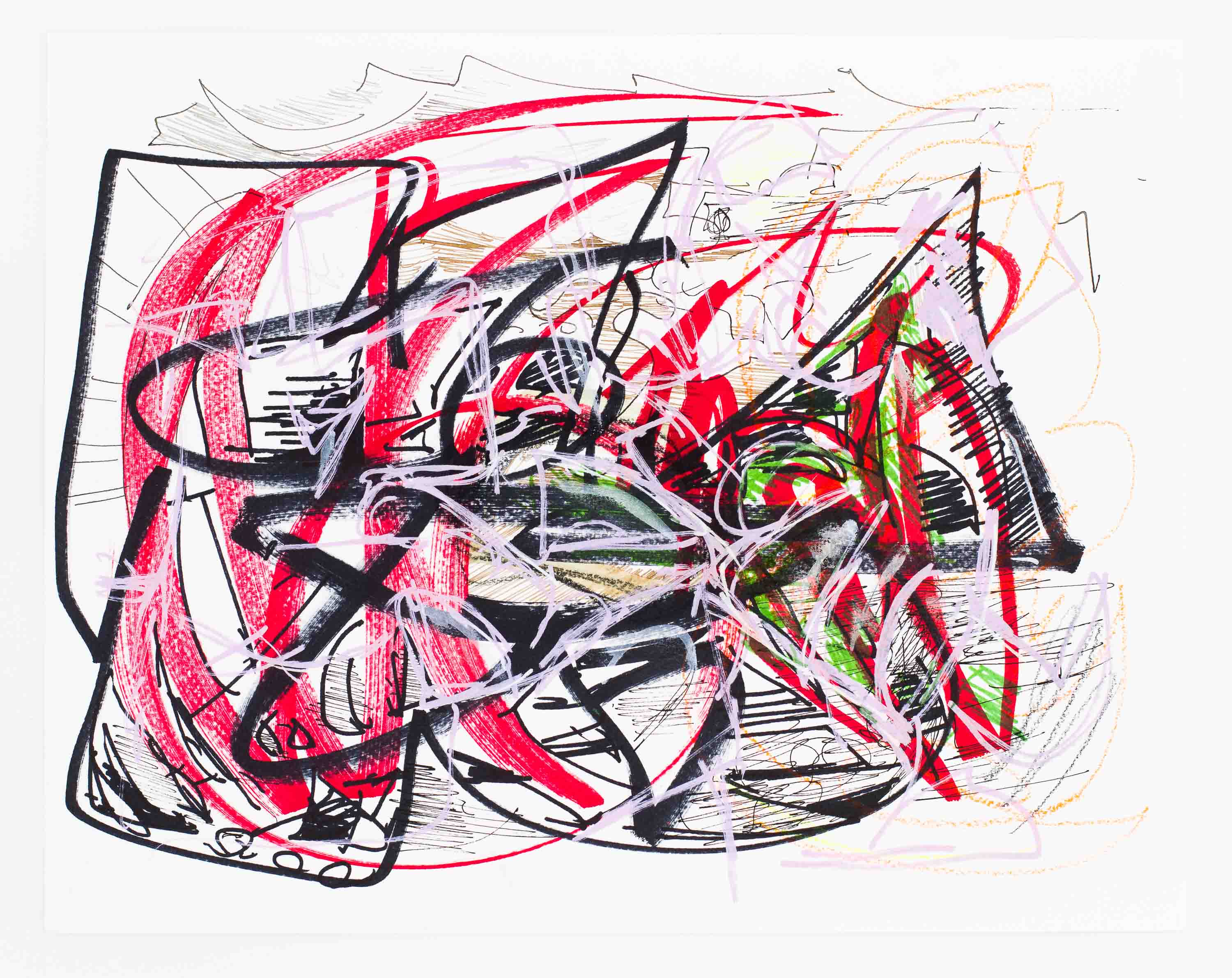
Scribouillages
Hayan Kam Nakache2018Marker, color pencil and Indian ink on paper
27,9 × 35,5 cm -
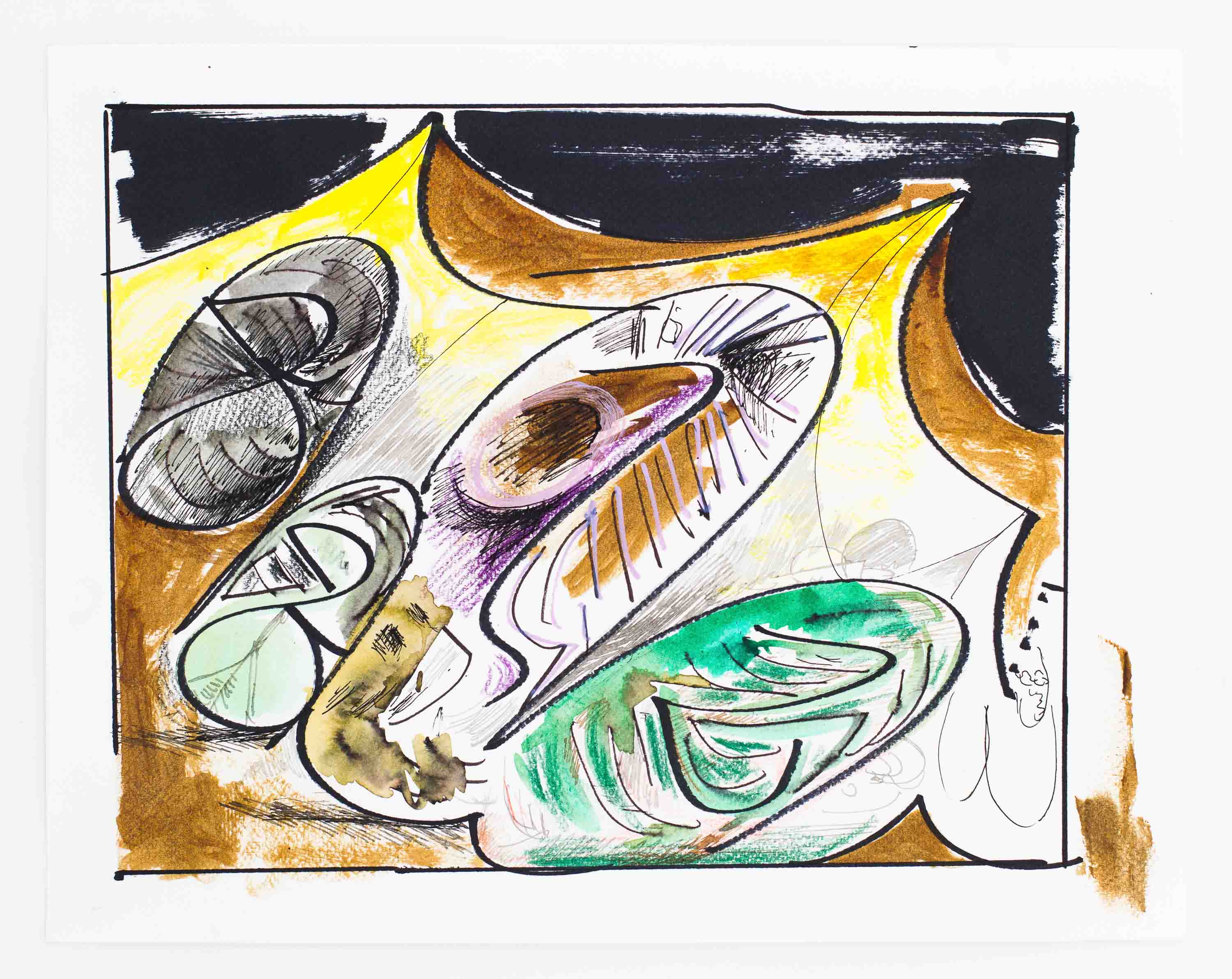
Skulls
Hayan Kam Nakache2018Marker, indian ink, acrylic and pencil on paper
27,9 × 35,5 cm -
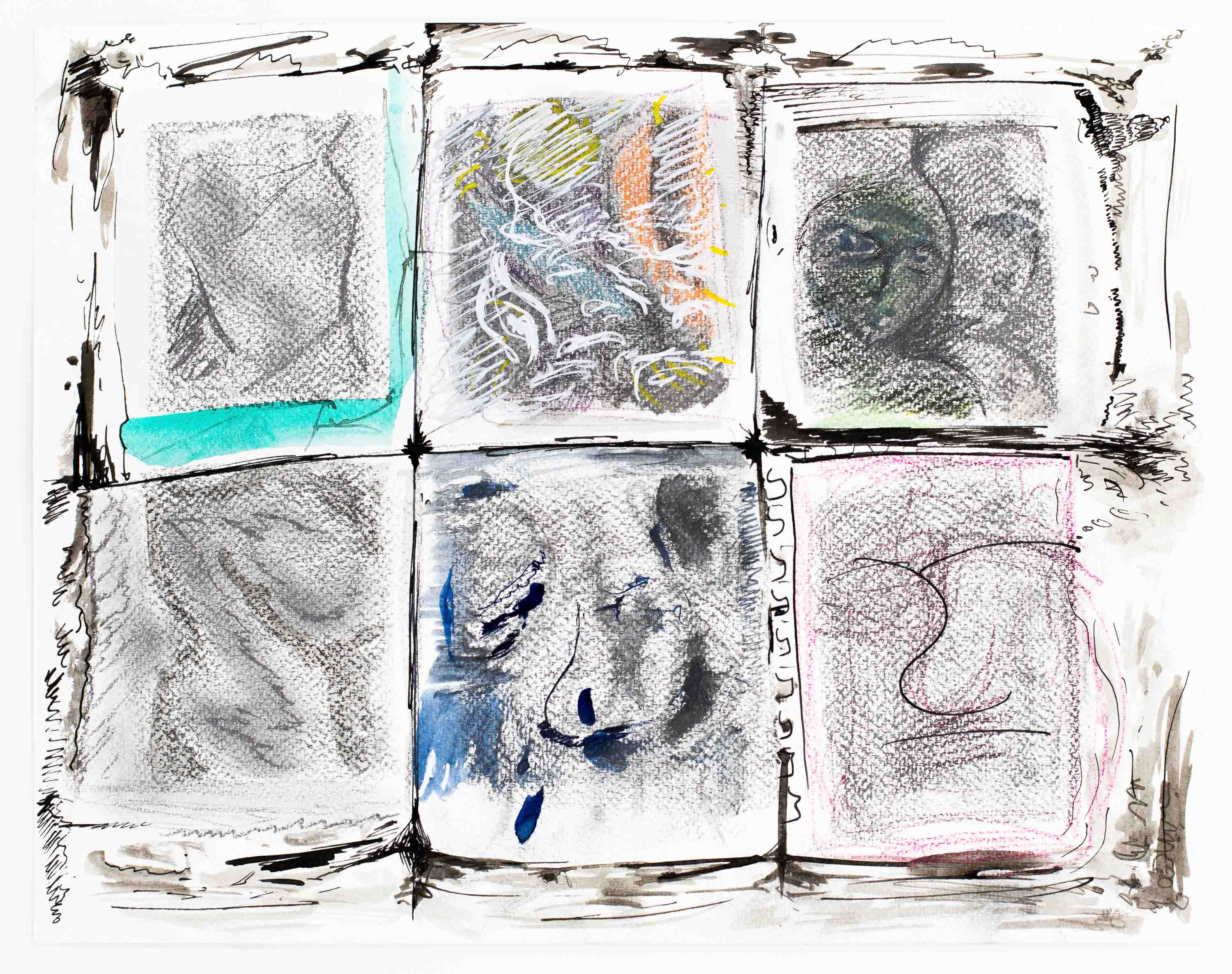
Six stamps
Hayan Kam Nakache2018Color pencil, indian ink and acryl on paper
27,9 × 35,5 cm -
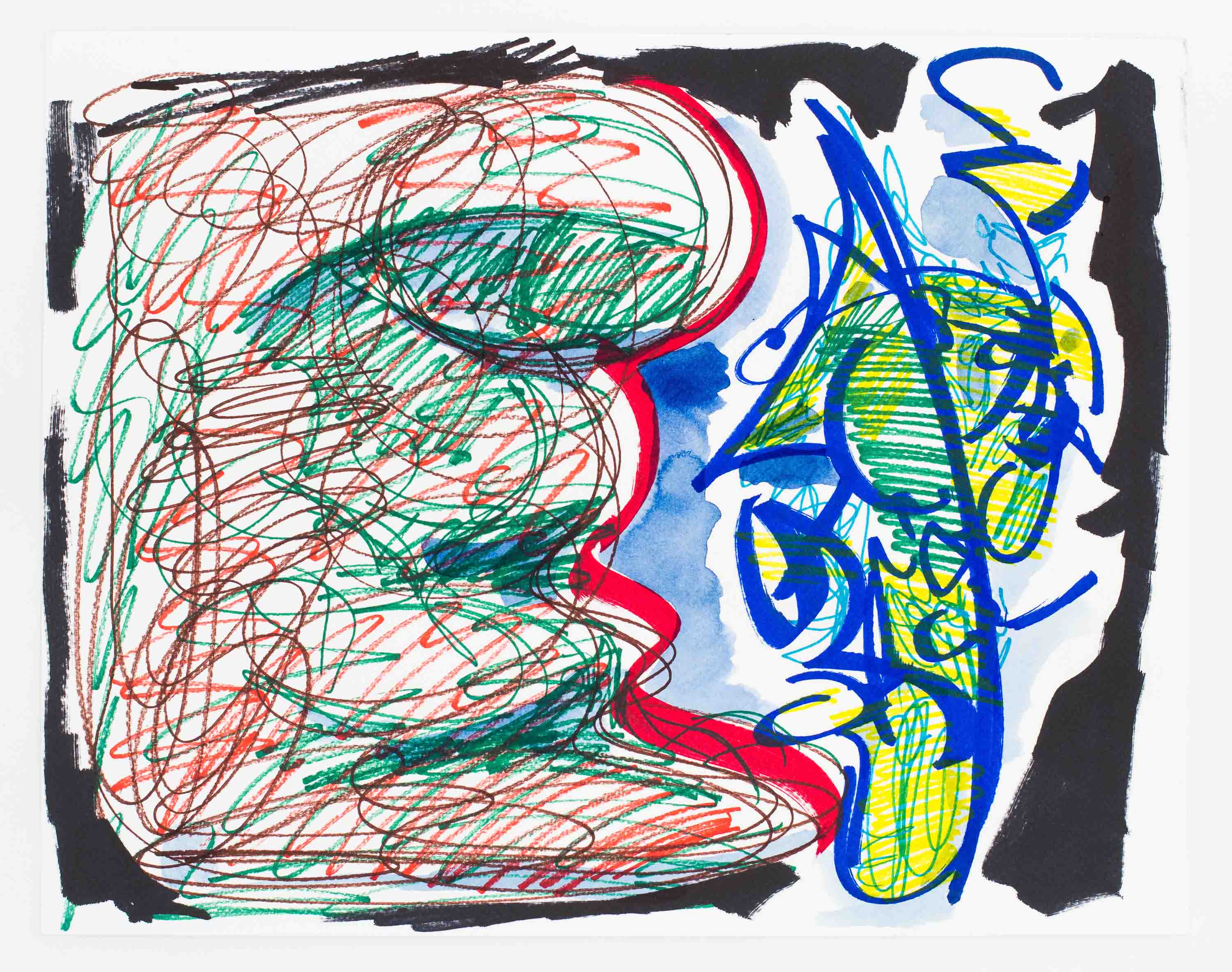
Strong
Hayan Kam Nakache2018Marker on paper
27,9 × 35,5 cm -
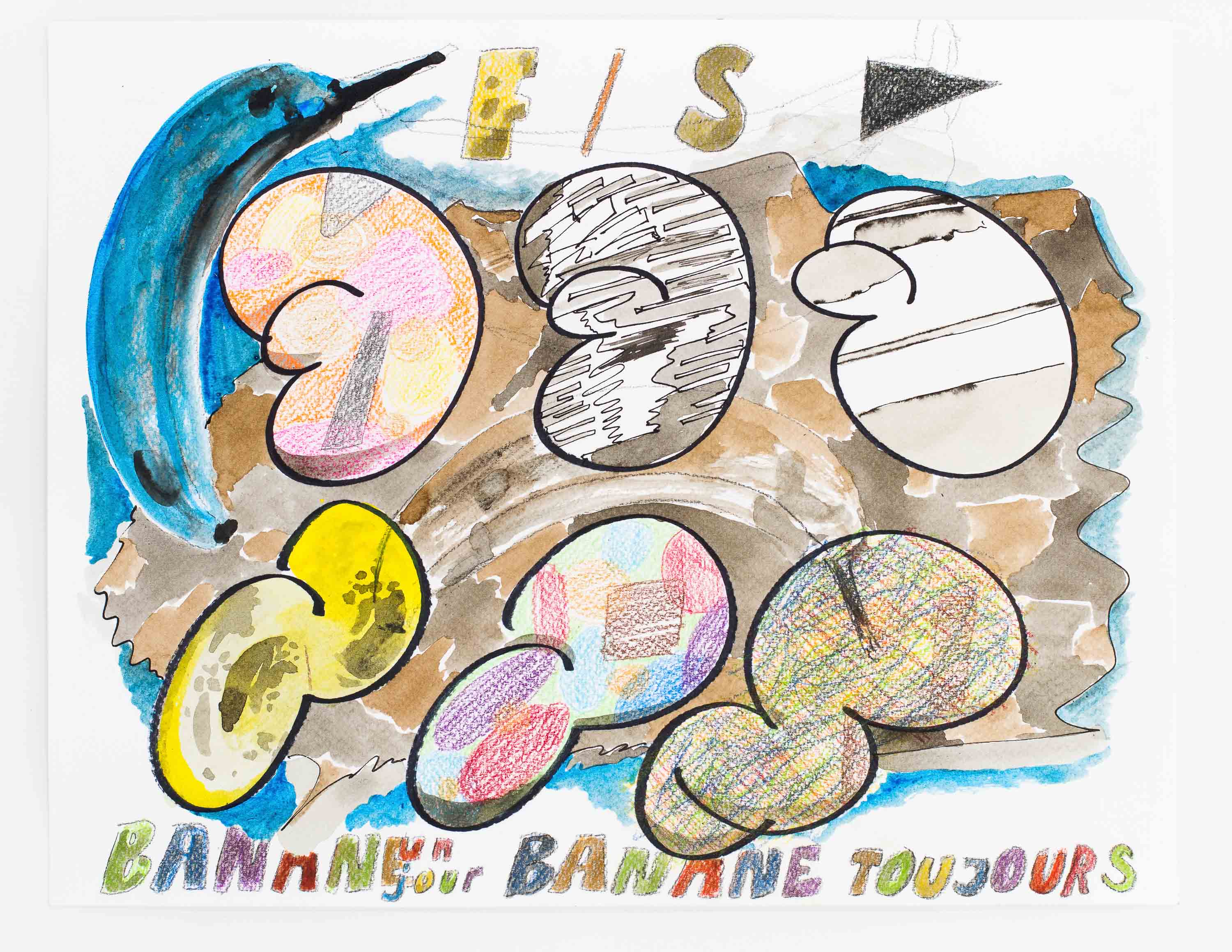
Banane un jour, banane toujours
Hayan Kam Nakache2018Color pencil, acryl and marker on paper
27,9 × 35,5 cm -
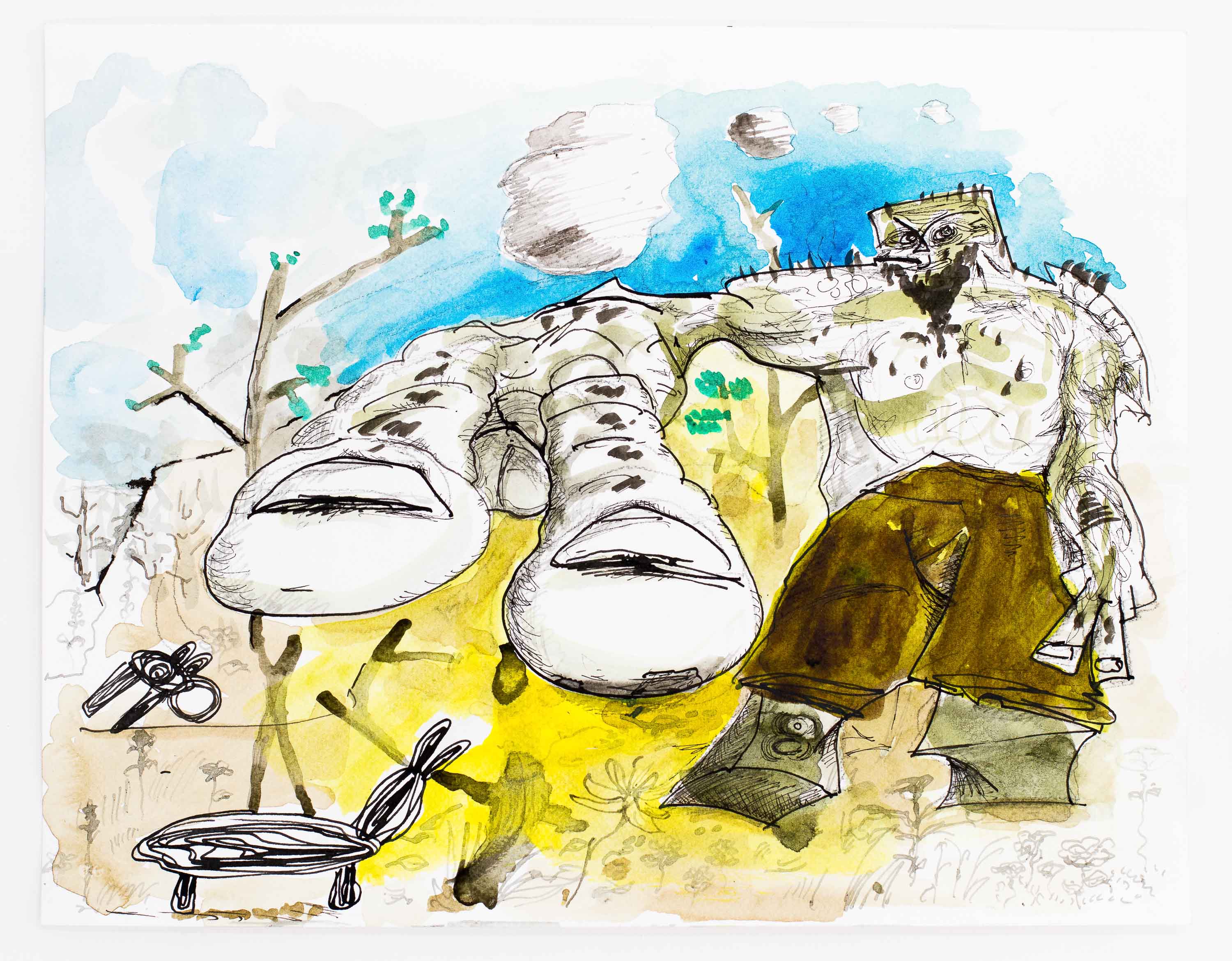
Two Fingers
Hayan Kam Nakache2018Indian ink and acrylic on paper
27,9 × 35,5 cm
-
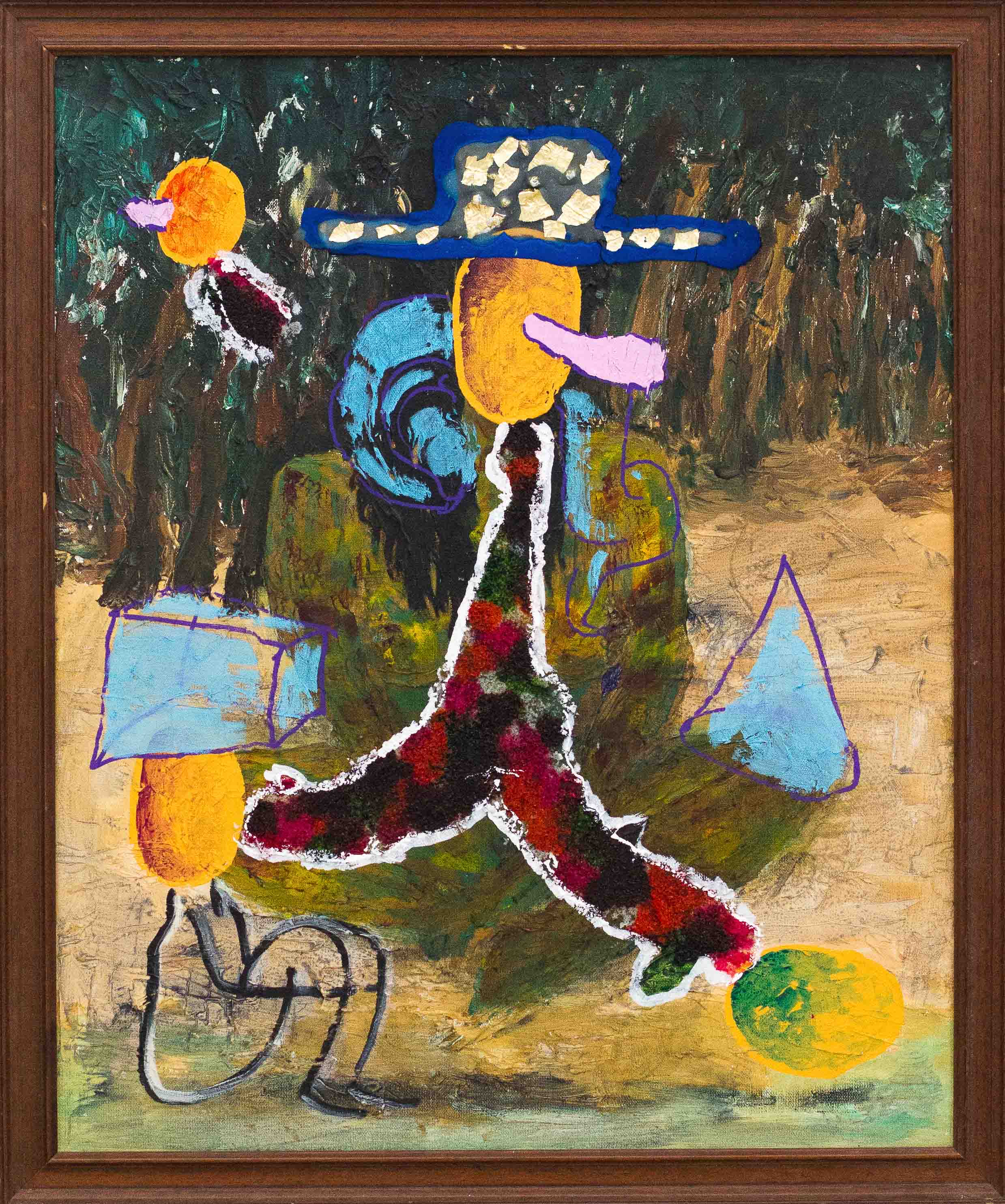
Tahiti Weirdos
Hayan Kam Nakache2017Acryl, marker, gouache, collage on founded picture
61 × 50 × 2 cm -
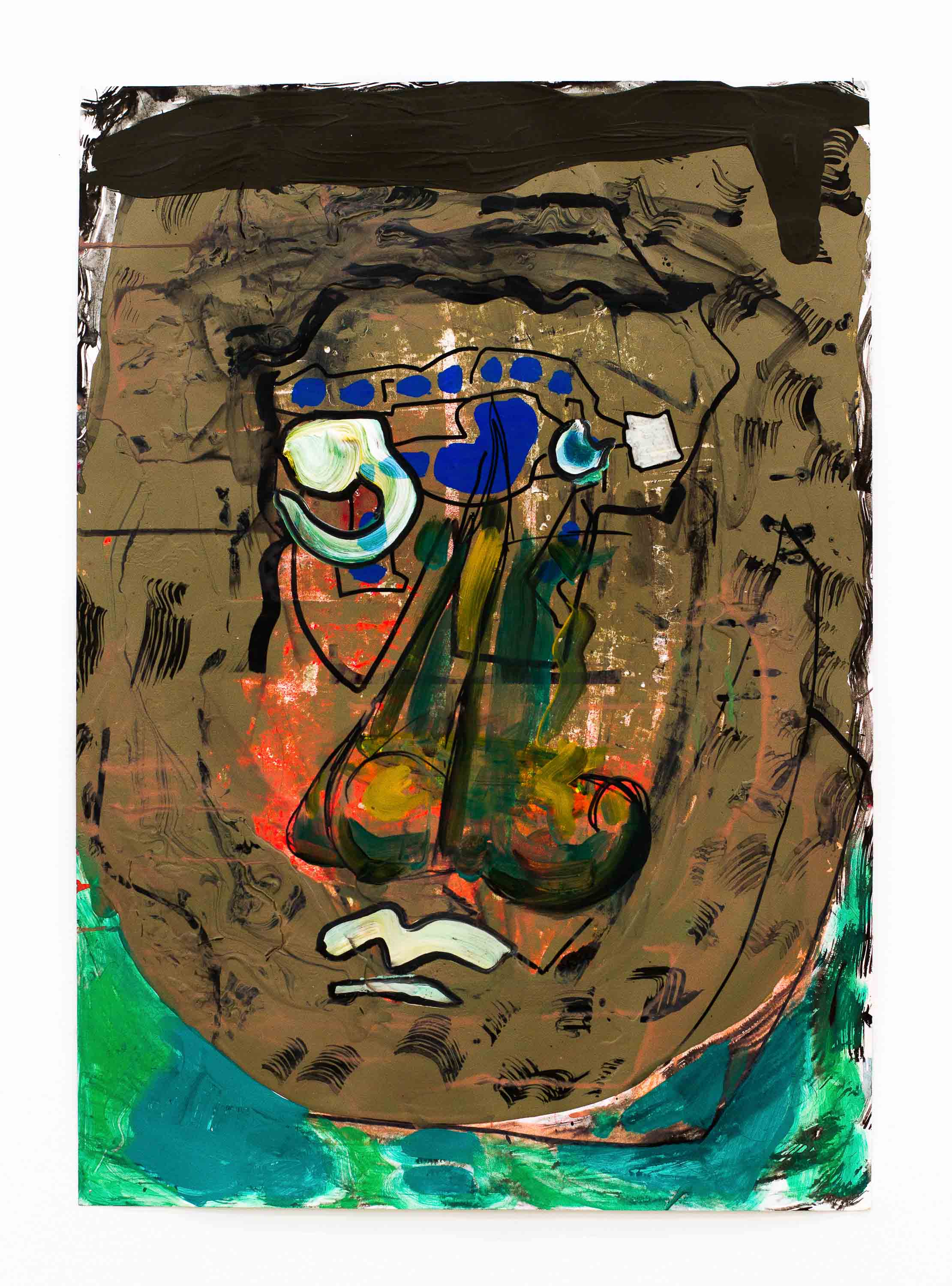
Portrait d'un légionnaire à bout
Hayan Kam Nakache2016Acryl, dispersion paint, indian ink and marker on paper
71,8 × 50,7 cm -
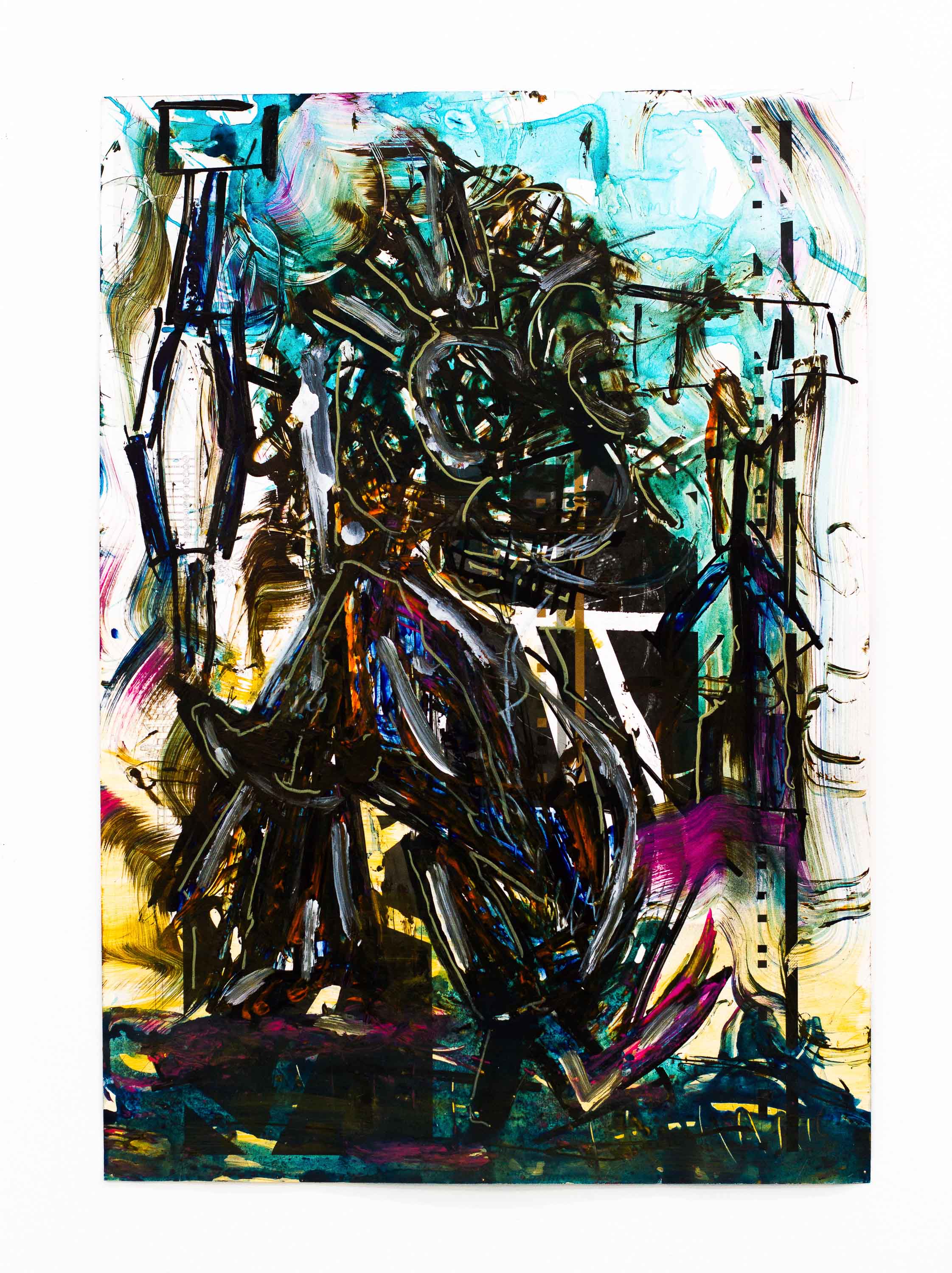
En marche vers un avenir incertain
Hayan Kam Nakache2017Acryl and marker on printed paper
71,8 × 50,7 cm

Hayan Kam Nakache
Kam Nakache Hayan was born in 1982 in Syri, Damas, lives and works in Genève.

